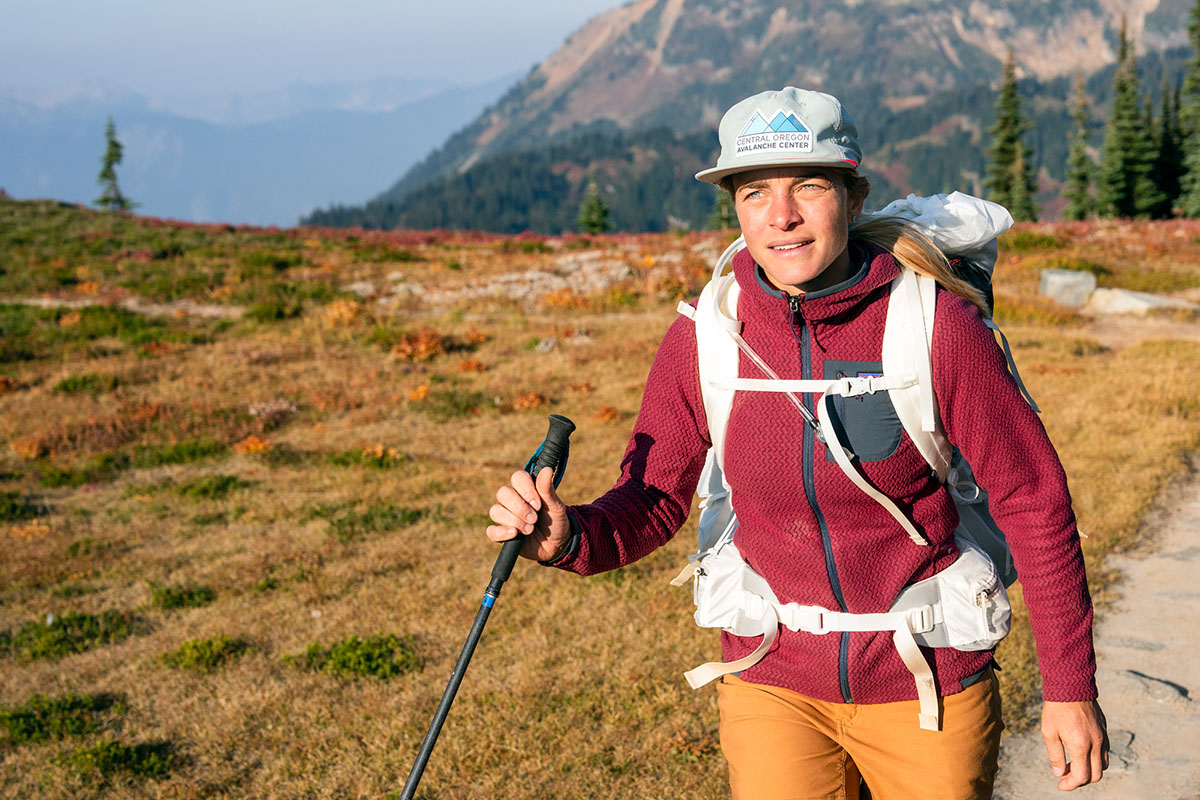
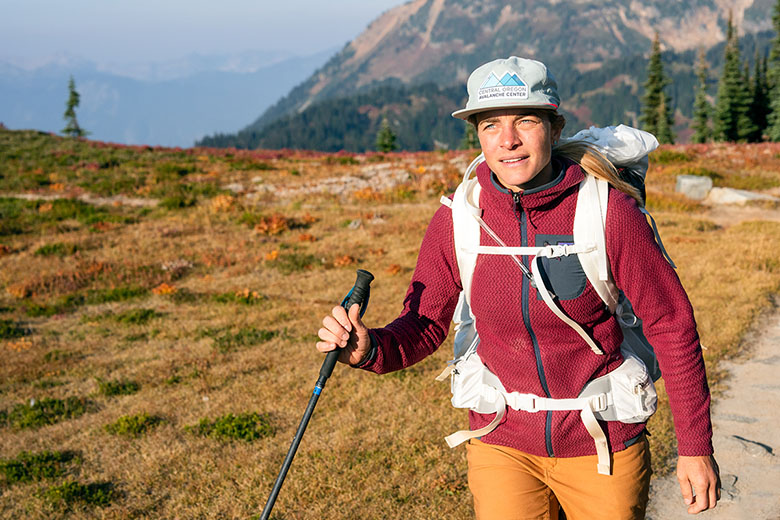
Nothing spells cozy quite like a fleece jacket, whether it’s a high-pile heavyweight or a sleek performance layer. And they’re more than just soft: Fleeces’ breathability and affordability make them an excellent option for everything from daily use to skiing, climbing, and hiking. We’ve worn a lot of fleeces in our time and have a deep appreciation for the breadth and depth of this category. Below we break down our favorite women’s fleeces of 2025, including performance styles from brands like Patagonia and Arc'teryx and everyday options from REI Co-op, Kari Traa, Stio, and more. For more information, check out our comparison table and buying advice below the picks, as well as details on how we test women’s fleeces.
Editor’s note: We updated this guide on June 6, 2025 to move the Arc'teryx Kyanite Hoody up as our favorite everyday fleece after recent testing. We also added the Cotopaxi Abrazo Fleece Full-Zip Jacket, as well as the Mountain Hardwear Summit Grid Half Zip Hoody as our favorite pullover option. Lastly, we swept the guide to ensure all other information was up to date at the time of publishing and added some photos from recent testing trips.
 Category: Performance/casual
Category: Performance/casual
Weight: 12.7 oz.
Fleece weight: Midweight
What we like: A plush and stretchy midlayer made with premium materials.
What we don’t: Expensive and not as breathable as the Patagonia R1 Air.
British Columbia-based Arc’teryx is known for their top-notch quality and technical savvy, and the Kyanite Hoody is no exception. Featuring Polartec’s premium Power Stretch Pro, the trim-fitting and stretchy Kyanite is a fantastic layering piece with articulated patterning that places a premium on mobility. It balances warmth and breathability well, too, with enough insulation for spring and fall weather while still effectively dumping heat during high-output activity. Finally, this material is one of our all-time favorites in terms of comfort: It’s nicely stretchy, soft against the skin, and maintains a high-end fit and finish throughout its lifespan (and in between washings). It also received some thoughtful updates recently, including the addition of internal drop pockets, a more streamlined fit, and revised hood and zipper details. Added up, the Kyanite Hoody fits the bill as a premium midlayer for cold-weather activities like resort skiing and snowshoeing.
Most recently, we took the Kyanite out on a mountaineering trip in the North Cascades and came away impressed with how well it transitioned between hanging out at camp and pushing for the summit. That said, it’s not the most breathable fleece for dedicated active use. With a durable nylon face, it can put up a decent defense against light rain and wind, but Patagonia’s R1 Air below is a more air-permeable choice for heart-racing endeavors. In the end, both are marquee performance fleeces from two of our favorite brands, so it's worth considering your priorities when deciding between the two. But for an all-around fleece that can keep up as well around town as it does in the backcountry, the Kyanite is tough to beat.
Read more: Arc'teryx Kyanite Hoody review
See the Arc'teryx Kyanite Hoody

 Category: Performance
Category: Performance
Weight: 10.9 oz.
Fleece weight: Light/midweight
What we like: Warm yet breathable; trim fit is great for layering.
What we don’t: Loses its soft feel over time; not water-resistant.
Patagonia offers a robust lineup of casual and performance fleeces, and at the opposite end of the spectrum from the Better Sweater below is the R1 Air here. Built to prioritize breathability for activities like hiking, climbing, and skiing, the relatively lightweight R1 Air uses hollow-fiber yarns and raised zig-zag patterning to trap heat when you want it and dump it when you don’t. The trim fit layers well under a shell jacket, and with three streamlined zip pockets, off-shoulder seams for comfort while carrying a pack, and a low-profile hood, it’s fully functional as a standalone piece, too. Added up, the R1 Air is one of the first fleeces we reach for when packing for high-output days on the trail, skin track, or rock.
The R1 Air is, first and foremost, a performance fleece, but it's so cozy and stylish that we often opt for it for daily wear, too (depending on your style, you might prefer it over the Better Sweater for casual use). That said, we've been disappointed with the way the fabric has worn over time—the fleece is wildly soft at first but takes on an almost rough feel after dozens of launderings. And while you’d be hard-pressed to find a better combination of warmth and breathability, there are other performance features that the R1 Air lacks: A jacket like the R1 CrossStrata Hoody below features a weather-resistant shell (great for use as a standalone piece), while a thinner fleece might be better for mild conditions or truly high-output use.
Read more: R1 Air Full-Zip Hoody review
See the Patagonia R1 Air Full-Zip Hoody

 Category: Casual
Category: Casual
Weight: 10.9 oz.
Fleece weight: Light/midweight
What we like: A warm and breathable midlayer for just $60.
What we don’t: Sightly inferior build quality and fit.
You can spend a lot of money on fleeces these days, but thankfully there are still a number of fun and functional options in the budget category. At just $60, REI’s Trailmade is less than half the cost of many jackets here but still checks all the boxes: It’s soft and cozy, relatively breathable, lightweight enough to squeeze into a daypack, and durable enough to last through a few seasons of wear. And with five fun colorways and eight women’s sizes (including plus sizes up to 3X), there’s a Trailmade for more of us.
What are the compromises in opting for such a wallet-friendly fleece? REI’s build quality simply does not measure up to that of premium designs from brands like Arc’teryx and Patagonia: The fit is less refined, the recycled polyester will pack out over time, and the feature set is fairly basic (you don’t get a chest pocket or thumb loops). But the Trailmade is decently stylish for a budget piece—especially compared to the Columbia Benton Springs below—with fun colorways, thoughtful accent stitching, and contrasting elastic at the cuffs and waist. All told, it’s an excellent value for both casual and light performance use, especially when you consider that a down or synthetic midlayer can run you upwards of $300 or more.
See the REI Co-op Trailmade Fleece

 Category: Performance
Category: Performance
Weight: 10.5 oz.
Fleece weight: Lightweight
What we like: Cozy yet tough and weather-protective.
What we don’t: Design is on the technical side for daily wear.
Performance fleeces are on the rise and offer a nice alternative to softshells or synthetic insulated jackets for heart-pumping activities in cool weather. Among the myriad options available, Patagonia’s R1 CrossStrata Hoody stands out for its highly functional combination of warmth and weather protection. Like the R1 Air above, the CrossStrata utilizes soft and air-permeable fleece on the inside but tacks on a water- and wind-resistant face fabric for standalone use in inclement conditions. You also get a nice suite of technical features, including a snug-fitting hood with a laminated brim, harness-compatible pockets, a streamlined hem, and cuffs that stay out of the way and aren’t prone to bunching or riding up. Added up, the R1 CrossStrata is a very well-executed performance piece that effectively replaces a hardshell jacket when you don’t need the utmost in wet-weather protection.
With a soft, pliable fleece liner, the R1 CrossStrata Hoody offers great next-to-skin comfort, especially relative to the slippery nylon of many synthetic insulated jackets. But compared to other fleeces here, it has a noticeably technical feel, and you give up some breathability with the durable shell. Depending on your style, the R1 CrossStrata might be a bit overkill for casual use, but for the right application—we especially love it for ski touring and Nordic skiing—it’s the whole package. For a bump in warmth, check out the thicker R2 CrossStrata Hoody ($229).
See the Patagonia R1 CrossStrata Hoody
 Category: Casual
Category: Casual
Weight: 10.0 oz.
Fleece weight: Midweight
What we like: Cozy and casual vibes with a bit of that Melanzana flair.
What we don’t: Not as ideal for performance use.
Melanzana popularized the micro-grid pullover, but their fleeces are notoriously hard to get your hands on—if you want a new one, you often have to show up in person at the Leadville, Colo. store (though at the time of publishing, you can snag one online, which is pretty rare). And without an appointment, you can't shop their full lineup in person—just overstock. But if you don’t need the “Melly” brand name, there are no shortage of high-quality knockoffs available, including the Mountain Hardwear Summit Grid here. The now-discontinued tunic version of the Summit Grid earned its stripes as a solid Melanzana alternative, with a similarly gridded midweight fleece, kangaroo pocket, and roomy, relaxed fit, but we love the new half-zip style featured here as the zip is great for dumping heat when you're building heat. On top of that, the Mountain Hardwear is much easier to get your hands on, as it's widely available online for just $90.
The Summit Grid Hoody features a high-zipped turtleneck with a hood, a drawcord adjustment at the hem, and a stylish tunic length that provides a bit of extra coverage. In our opinion, the discontinued Tunic version (which didn’t have the zipper) pulled off the Melly knock-off better, but the Half Zip here offers more versatility. And though the Summit Grid isn't our first choice as a technical fleece—it's fairly bulky, and we appreciate features like a full-zip and zipped hand pockets for performance use—but it doesn't get much better for daily wear. If you miss the tunic version of the Summit and are willing to stray from the mainstream, several cottage brands also offer quality Melanzana lookalikes, including Fayettechill, SkyGoat, LightHeart Gear, and HoudaTrail (HoudaTrail can make you a fully custom pullover, with your own choice of colors and tailored to your specific measurements).
See the Mountain Hardwear Summit Grid Half Zip Hoody

 Category: Casual
Category: Casual
Weight: 15.7 oz.
Fleece weight: Heavyweight
What we like: Warm, durable, and timeless.
What we don’t: Thick fabric can feel bulky and stiff.
Cold temperatures call for more insulation, and The North Face’s iconic Retro Denali delivers in spades. If you came of age in the mid-2000s (at least in the PNW), you probably know this fleece from high-school hallways and college quads, where it was just about as ubiquitous as a JanSport backpack. And with classic styling, heavyweight polar fleece, and weather-resistant nylon panels at the chest and arms, it’s for good reason it has stood the test of time.
The Retro Denali is one of the thickest options on our list, which translates to added weight and bulk. As such, the Denali isn’t particularly well suited for backcountry use—in other words, this is not the ideal fleece to have to stuff into your daypack or backpacking pack. What’s more, it’s not nearly as mobile as stretchier or lighter options like the Kyanite or R1 Air above, and might leave you feeling a bit constricted (unless you size up). But realistically, most folks buy the Retro Denali for wearing casually, and it’s not out of sorts on the occasional hike. We also really like the hooded version for just $20 more.
See The North Face Retro Denali
 Category: Casual
Category: Casual
Weight: 15.9 oz.
Fleece weight: Midweight
What we like: A classy jacket with Patagonia’s hallmark quality and performance.
What we don’t: Might look too old-fashioned for some; thick and runs small.
Patagonia’s Better Sweater is a classic everyday fleece, striking a fine balance of quality, performance, and casual-yet-classy styling. True to its name, the jacket features a muted heathered knit aesthetic, but don’t let its looks fool you: This jacket is much more functional than your standard cardigan thanks to its practical storage layout, a wind flap backing the front zipper, and an easy-to-launder polyester build that's 100%-recycled. It’s also impressively warm: The midweight fleece features a plush microfleece interior and smooth exterior that provide sufficient protection from the wind. If you’re in the market for a high-quality, do-all jacket for everyday use, the Better Sweater is a great place to start.
Style is largely a matter of personal preference, but we think the Better Sweater fits in better on city commutes than it does at the campground. We also found sizing to be on the smaller end (sizing up is a good idea if you’re on the fence), and it doesn’t help that the thick fabric is a bit restrictive due to the lack of stretch. But for everyday use and bringing on the occasional hike or backpack, the Better Sweater puts it all together better than most. And given its popularity, Patagonia offers a wide range of styles to choose from, including a 1/4-Zip, and Vest varieties.
Read more: Patagonia Better Sweater review (men's version)
See the Patagonia Better Sweater
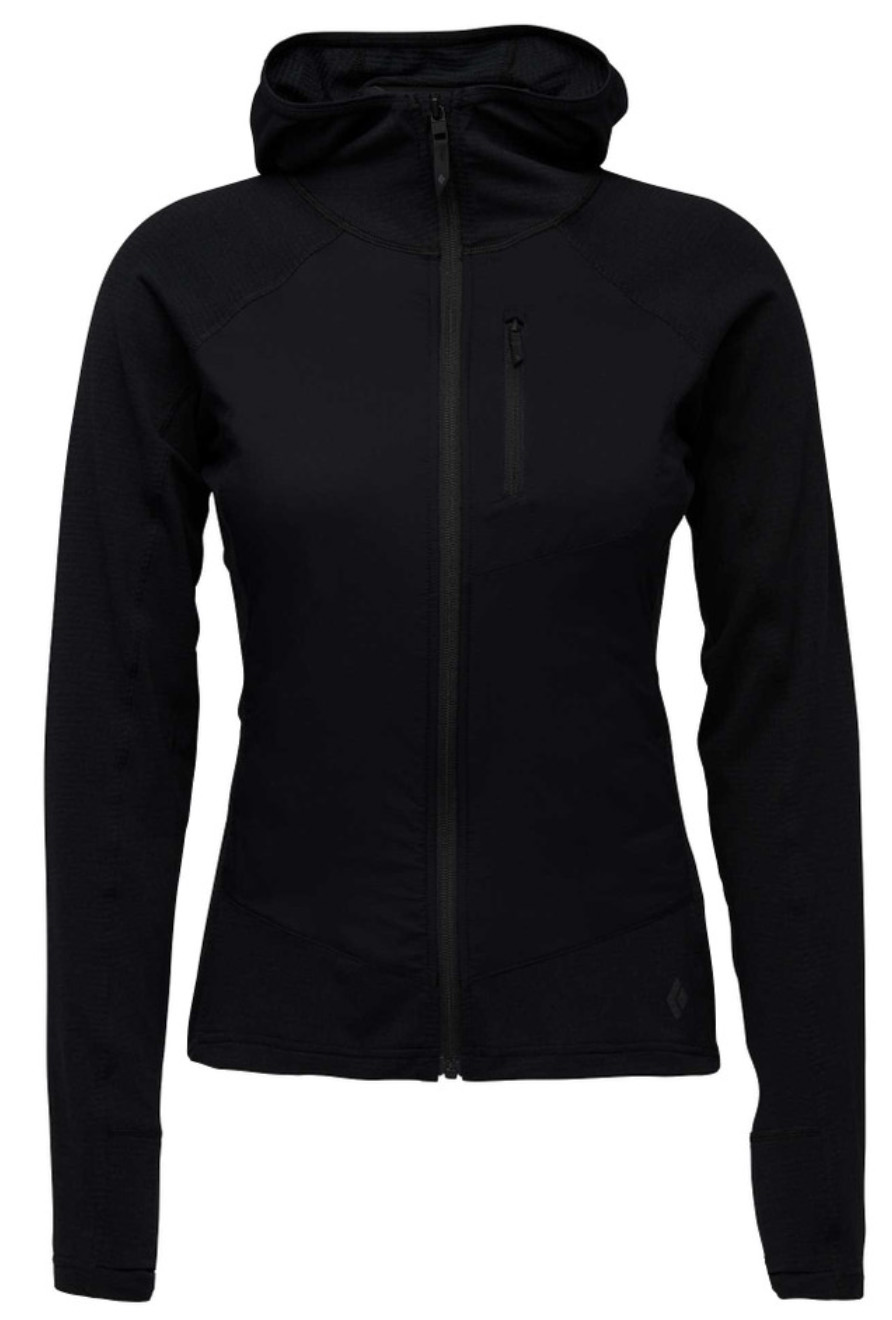 Category: Performance
Category: Performance
Weight: 7.2 oz.
Fleece weight: Lightweight
What we like: A Swiss Army Knife jacket for mild conditions or high-output activities in cold weather.
What we don’t: Thinner and snugger fitting than traditional fleeces.
Hybrid fleeces are a relatively new concept, but they’ve quickly become one of our go-tos for performance use. Most designs pair a fleece back and arms with synthetic insulation at the core, resulting in a best-of-both-worlds combination of breathability and warmth. As a bonus, they also resist light wind and moisture, thanks to the nylon face fabric covering the insulation. The result is an all-in-one package deal that all but eclipses the more standard baselayer-windbreaker combination. Among the options, Black Diamond’s Coefficient LT Hybrid is a standout favorite: It’s impeccably built, offers great stretch with a trim fit, and is the perfect weight for high-output activity.
We’ve found the Coefficient LT Hybrid to be especially ideal when we’re wearing a backpack or getting the brunt of the weather at our front, as is the case with wind-generating activities like running, biking, or Nordic skiing. It’s also a great climbing layer due to its snug fit and helmet-compatible hood, although the back is permeable to light winds. It's worth noting that the thin Polartec Power Grid fabric is more akin to a baselayer than most fleeces here—you won’t be able to layer it over anything bulky and will want more warmth for mid-winter use. But for mild conditions or high-output activities in cold weather, the Coefficient LT Hybrid is an incredible hybrid layer. For a step up in warmth, check out Patagonia’s Nano-Air Light Hybrid, which pairs R1 Air fleece with their popular Nano-Air synthetic jacket.
See the BD Coefficient LT Hybrid Hoody
 Category: Casual
Category: Casual
Weight: 12.8 oz.
Fleece weight: Midweight
What we like: Cozy, warm, and very fun styling.
What we don’t: Few features and roomy fit.
Patagonia dominates the fleece jacket market, and the third design from their lineup to make our list this season is the Lightweight Synchilla Snap-T. This legendary piece has been around for decades and remains very popular for its simple but functional design. The midweight fleece is warm and cozy when worn next to skin, and the styling is both timeless and versatile—we’re quick to throw it on for walks around the block, bike rides into town, or grabbing a bite to eat after ski days. It certainly wouldn’t be our first choice for hauling into the backcountry, but the Synchilla’s good looks and practical warmth have earned it a spot front and center in our winter wardrobe.
In line with its casual slant, the Patagonia Lightweight Synchilla Snap-T is low on features, including only a single pocket at the chest and no hem drawcord for adjusting fit. Speaking of fit, the Synchilla is pretty roomy, which we like for around-town use, but it does make it difficult to layer underneath a rain shell. But again, the Synchilla’s cozy feel is the biggest draw for most, and the styling is downright trendy, with tons of fun patterns and designs to choose from. All told, it’s for good reason that the Synchilla has reached iconic status in the outdoor world and beyond.
See the Patagonia Lightweight Synchilla Snap-T
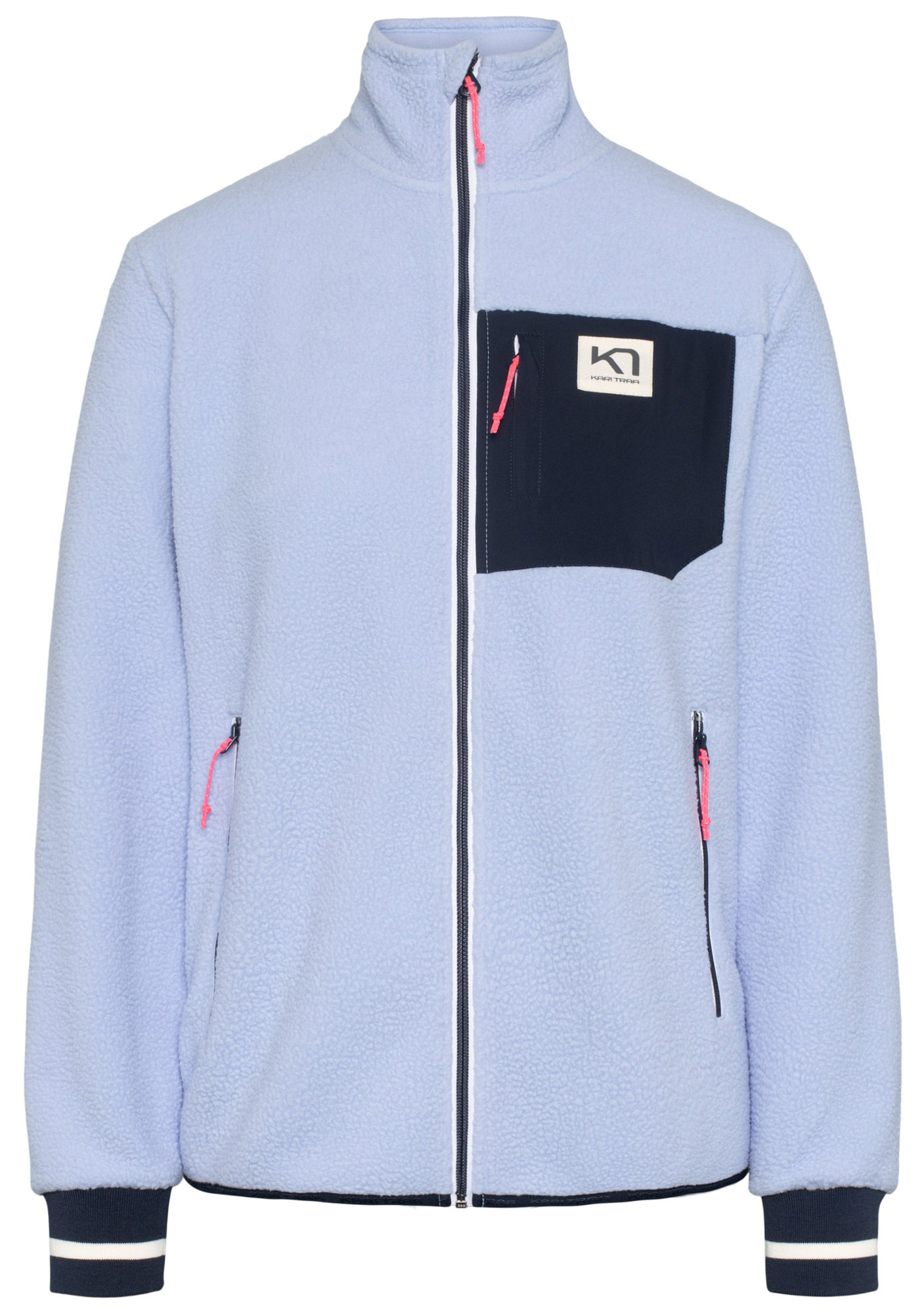 Category: Casual
Category: Casual
Weight: 8.8 oz.
Fleece weight: Light/midweight
What we like: A traditional-looking fleece without the bulk.
What we don’t: Stiff collar; has a tendency to shed.
Norwegian brand Kari Traa bucks the shrink-it-and-pink-it trend with a lineup of high-performance outerwear designed for women, by women. You won’t find boxy or bland pieces here—Kari Traa, the Olympic freestyle skier who founded her namesake company, places a high priority on fun color schemes and flattering shapes. The Rothe is one of their most classic fleeces and is rife with thoughtful features and details, including a tall collar, high-quality ribbed cuffs, hand pockets, and a classy logo patch next to the chest pocket. What’s more, the relatively thin material offers a traditional look and feel without the bulk of a jacket like the Retro Denali above.
With a healthy selection of colorways and availability in seven sizes (including two plus sizes), there’s a Rothe for almost everyone. And true to its casual intentions, it offers a fairly relaxed fit that gives off laid-back, everyday vibes. Not everyone will like the stiff collar, which doesn’t fold down like some designs, and the Rothe has a tendency to shed a great deal at the beginning of its lifespan (laundering it a few times will expedite the process, and using a washing bag like a Guppyfriend can help keep those microplastics out of the water cycle). But the Kari Traa is nevertheless an excellent option for those looking for a fun spin on a traditional fleece and makes a great companion for daily commutes, casual outings, après, and more.
See the Kari Traa Rothe Fleece
 Category: Performance
Category: Performance
Weight: 8.6 oz.
Fleece weight: Lightweight
What we like: Incredibly warm for the weight; quick-drying and breathable.
What we don’t: Expensive; cuffs have accumulated stains.
Norrøna might fly a little under the radar this side of the Atlantic, but the Norwegian outdoor clothing brand gives names like Patagonia and Arc’teryx a run for their money. From their Falketind mountaineering collection, the Alpha120 is a high-quality fleece hoody that prioritizes breathability, quick dry time, and a lightweight build. The 120-gram Polartec Alpha fleece is so loosely woven that you can see through it, but this is where the magic happens: We’ve been totally blown away by this material’s warmth, and it effectively dumps heat, too. Under the arms and at the sides and hood, sleek and snug-fitting 139-gram Polartec Power Grid fabric (similar to that of the thin BD Coefficient LT Hybrid above) provides a great low-bulk alternative to the fuzzy Alpha core.
The Falketind Alpha120 packs in a lot of warmth for the weight, and although we haven’t found it to be noticeably more breathable than similarly lightweight options, it does dry noticeably fast. As a result, it’s a great choice for high-output activities like mountaineering, backcountry skiing, trail running, and alpine climbing. We did have initial concerns about the jacket’s durability given the thin makeup of the Polartec Alpha in particular, but it’s still faring well after moderate use (minus some staining at the cuffs). You’ll pay a little more for the Norrøna name, but the Alpha120 is a serious performance fleece that has more technical chops than most offerings here.
See the Norrøna Falketind Alpha120 Zip Hood
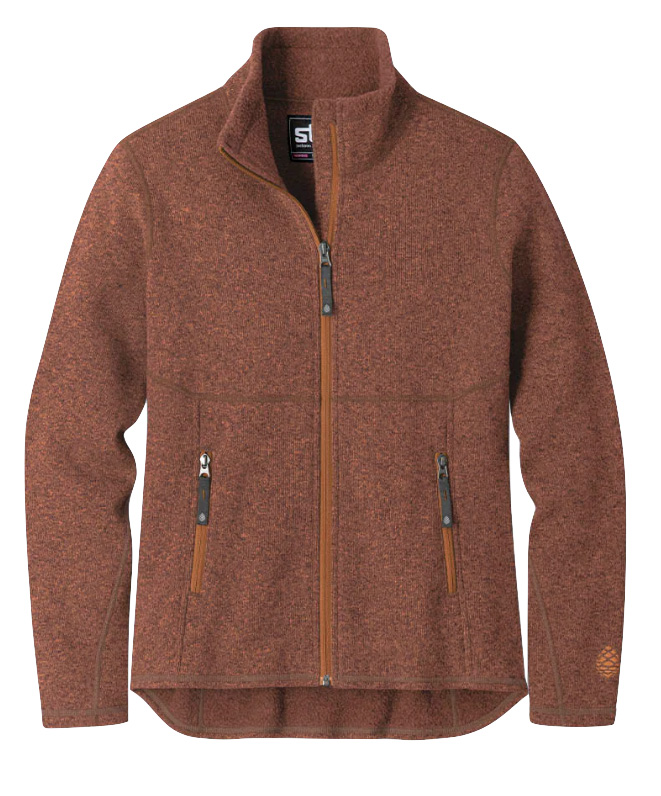 Category: Casual
Category: Casual
Weight: 14.0 oz.
Fleece weight: Midweight
What we like: A slightly cheaper and better-fitting alternative to the Better Sweater.
What we don’t: Might run too long for some; limited colorway selection compared to Patagonia.
Based at the foot of the Teton range in Jackson Hole, Wyoming, Stio offers a variety of fun and high-quality outerwear for both casual and performance use. Their Sweetwater Fleece Jacket is a great alternative to the Better Sweater above for those looking for a slightly more modern vibe. Like the Patagonia, it combines a sweater-knit face fabric with a brushed interior liner, which gives off classy wool vibes without the upkeep or scratchiness. On the other hand, it bucks the short-and-boxy trend to which Patagonia fleeces often succumb with a longer length and drop-tail hem. We also like the long pull tabs on the main zipper and hand pockets, which are easier to toggle than the Better Sweater’s—especially when wearing gloves.
Even more popular than the Sweetwater Fleece Jacket is the Sweetwater Fleece Hoodie, which features a wide collar with hood, along with an offset front zipper for flair. A kangaroo pouch and thumb loops round out the build, which is decidedly casual yet classy—the perfect insulator for fall days in your favorite mountain town. Keep in mind that both versions do run long—if you’re of shorter stature, the drop-tail hem might simply be too much. But regardless of which Sweetwater you opt for, you’re getting a well-built fleece that will keep you warm while looking good in the process.
See the Stio Sweetwater Fleece Jacket
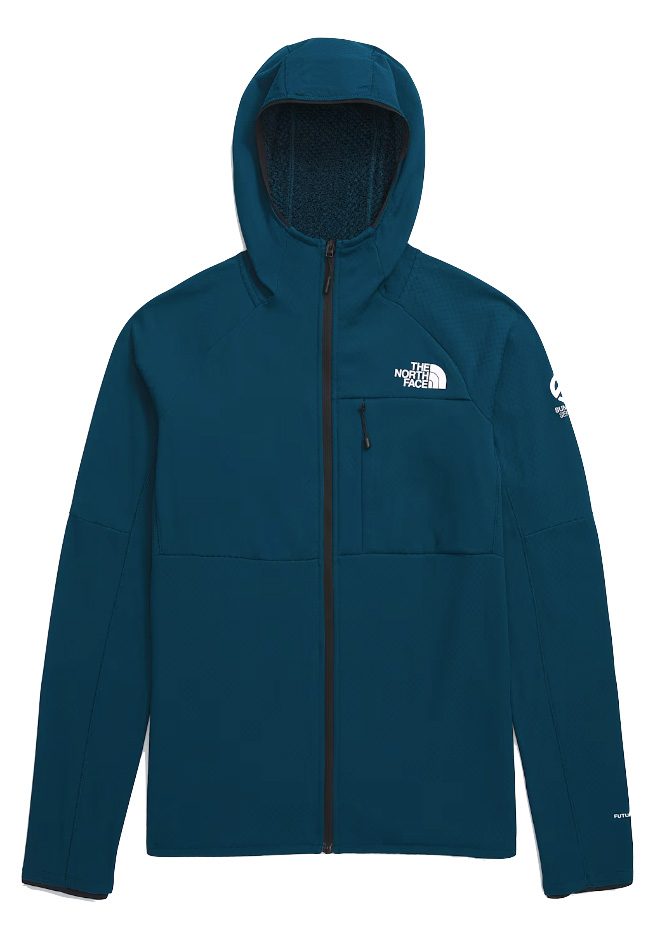 Category: Performance
Category: Performance
Weight: 6.2 oz.
Fleece weight: Lightweight
What we like: Impressive temperature regulation and warmth for the weight.
What we don’t: Fabric weight is more like a baselayer than a fleece; no hand pockets.
The North Face’s Summit Series Futurefleece Hoodie epitomizes the technical fleece category and is a wonderful midlayer for pursuits like backcountry skiing, climbing, or winter hiking. First off, you get a very lightweight fleece (its 6.2-oz. weight is the lowest here), which offers a high dose of breathability for heart-pumping activities and disappears into a corner of your pack when not in use. Second, the trim fit keeps mobility high and layers easily underneath a shell or insulated jacket. Top it off with an external chest pocket, snug hood, and seamless shoulders that eliminate pressure points under a backpack, and you get a no-frills fleece that will get the job done in both shoulder-season and winter conditions.
The TNF’s Futurefleece material is undeniably lightweight—in fact, at just 124 grams per square meter, it’s on par with many baselayers. It also features a painfully small zipper (#3 YKK), and many women will miss the added convenience of hand pockets. But for active pursuits or midlayer use, the Futurefleece provides impressive warmth and breathability: Its unique interior (essentially exposed loops on the inside of the fabric) traps heat and regulates temperature better than most fleeces here, and it’s even comfortable when worn next-to-skin.
See the TNF Summit Futurefleece Full-Zip Hoodie
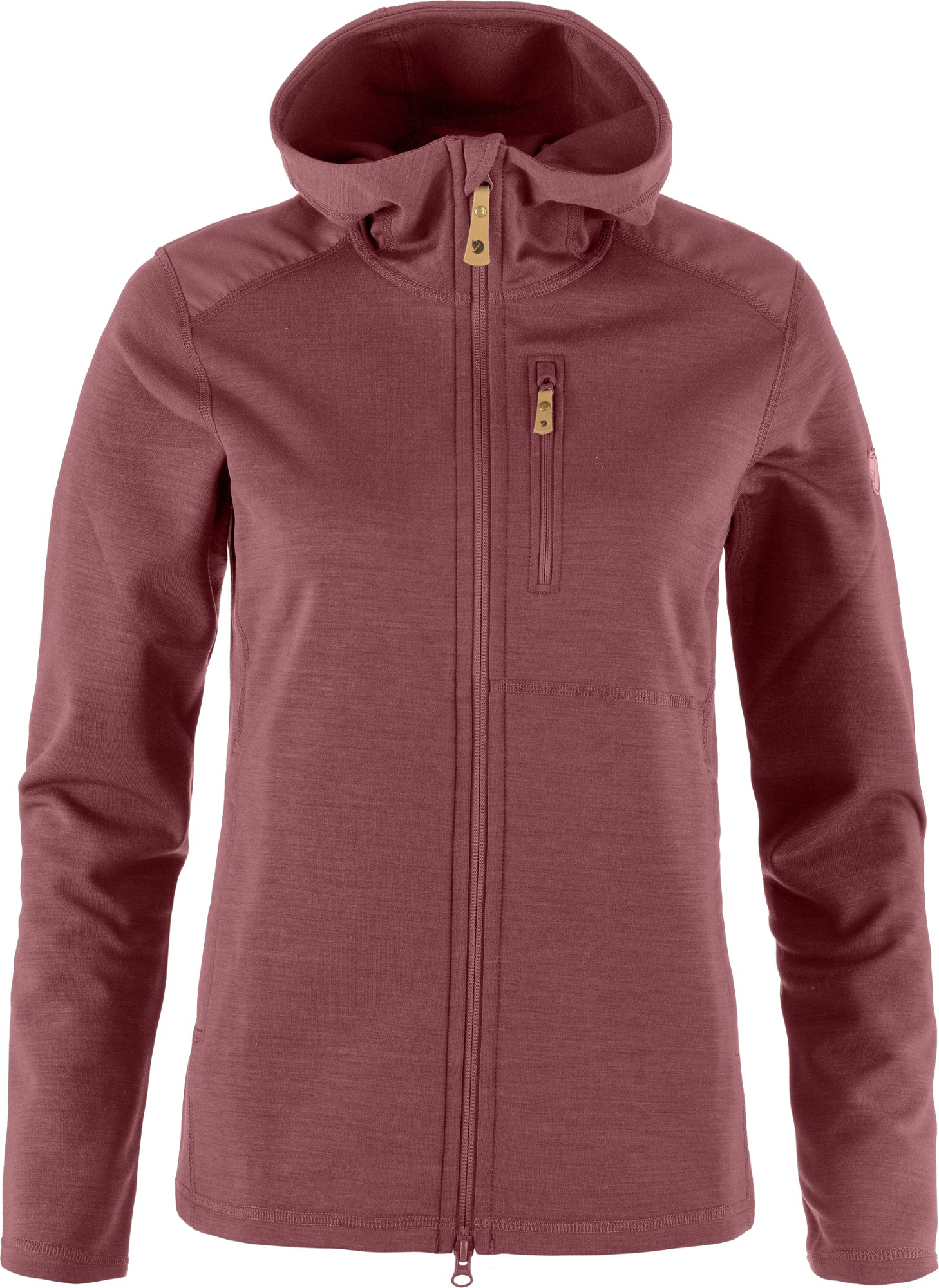 Category: Performance/casual
Category: Performance/casual
Weight: 1 lb. 0.4 oz.
Fleece weight: Midweight
What we like: Combination of wool and polyester is very warm; typical Fjallraven quality and attention to detail.
What we don’t: Too heavy for the backcountry; too snug-fitting for many casual users.
Fjallraven is known for their attractive styling and attention to detail, and the Keb Fleece Hoodie is a case in point. Using a unique polyester and wool blend, the jacket does a great job balancing warmth with freedom of movement and moisture-wicking capabilities. We’re also fans of the simple but practical storage layout, which includes two generously sized hand pockets and a smaller chest pocket, along with a trim fit that's ideal for layering. Tack on a high-end look and feel that few brands are able to emulate, and the Keb stands out as one of the most premium and well-built options on our list.
Like most Fjallraven designs, the Keb Fleece Hoodie aims to balance casual and performance intentions. The fleece blend, beefy G-1000 reinforcements along the shoulders, and snug-fitting hood give the Keb a technical slant, but the jacket is heavy at over 1 pound and doesn’t pack down particularly well for stashing in a pack. On the flip side, the clean design and attractive colorways wear decently well in the city, but the snug fit doesn’t offer the outright casual appeal of designs like the Rothe or Trailmade above (and you’re certainly paying a steep premium at $210). But there’s no denying that the Keb is another classy piece of gear from the Swedish company. For a lighter-weight option with similar styling, check out Fjallraven’s $55-cheaper Abisko Trail Fleece.
See the Fjallraven Keb Fleece Hoodie
 Category: Casual
Category: Casual
Weight: 12.0 oz.
Fleece weight: Light/midweight
What we like: Cotopaxi’s hallmark retro styling and strong sustainability slant.
What we don’t: Significantly pricier than the Trailmade; not particularly warm or packable.
Cotopaxi’s vibrant, retro styling and strong sustainability focus put the brand on the map, and the Abrazo Fleece Full-Zip Jacket carries the torch. The fleece itself is soft and cozy, and while not performance-oriented in any way, the Abrazo’s two hand pockets and elastic binding at the cuffs and hem are functional for everyday use. Plus, the Abrazo is constructed with 100% recycled and Bluesign-approved fleece, making it one of the most eco-friendly options on this list. If good looks, plush comfort, and sustainability are at the top of your priority list, the Abrazo is a nice option to consider.
At $135, the Cotopaxi slots in between true budget designs like the REI Trailmade above and Columbia Benton Springs below and more premium alternatives from Patagonia and Arc’teryx. However, while you can certainly wear it for activities like hiking, skiing, climbing, and biking, the Abrazo isn’t as warm as many options here and doesn’t pack down well for stashing in a pack. Build quality isn’t anything to write home about either, although we feel the price tag is reasonable for what you get. In the end, while not a standout, the Abrazo will get the job done for casual use without breaking the bank.
See the Cotopaxi Abrazo Fleece Full-Zip Jacket
 Category: Casual
Category: Casual
Weight: 15.2 oz.
Fleece weight: Heavyweight
What we like: A modern take on a traditional shearling fleece.
What we don’t: Boxy fit with proportions that don’t work for many.
Patagonia’s Retro Pile might just be the most classic fleece jacket here, with a double-sided shearling that epitomizes winter-weight fleeces of yore. (Before the age of microfleece or gridded fleece, there was synthetic shearling, which sought to mimic a sheep’s hide and wool.) The Retro Pile’s double-sided design offers this high-pile fleece on both the interior and exterior, resulting in an extra dose of warmth and coziness for shoulder-season and winter days. And with a classy elastic binding on the collar, zipper, and hem, corded zipper pulls, and a front and back yoke, it goes the extra mile to earn the "retro" in its name.
But for all its fun styling, the Retro Pile isn’t perfect. Many women have found the fit to be off—in contrast to sleek and trim designs like the Fjallraven Keb, Norrøna Alpha120, and Patagonia R1 Air above, the Retro Pile has a boxier shape that doesn’t seem to always nail the proportions. Some women complain about the arms being too tight, while others gripe that the length is too short. And like many fleeces, it has a tendency to shed, although this can be remedied after a few wash cycles. But if you’re drawn to the style (and the fit works for you), the Retro Pile gets more cozy points than just about any other fleece here, and it’s hard not to love the throwback styling. For even more of a statement piece, Patagonia’s Lunar Dusk turns up the warmth dial with thicker fleece, comes in several vibrant patterns, and features a smooth polyester lining that easily slides over baselayers.
See the Patagonia Retro Pile
 Category: Casual
Category: Casual
Weight: 14.4 oz.
Fleece weight: Midweight
What we like: Soft, inexpensive, and offered in a wide variety of sizes and colorways.
What we don’t: Looks and feels like a budget fleece; durability is questionable.
Columbia is a consistent leader in the budget realm, and their affordably priced Benton Springs rounds out our lineup for 2025. Right away, we’ll note that this is a very basic fleece: You don’t get any techy fabrics, and the feature set is decidedly simple with just two hand pockets and a hem cinch. What it does have going for it, however, is value: The Benton Springs provides decent warmth and around town-friendly styling for under $50, and we love the wide variety of sizes and colorways to choose from.
However, as with all budget designs, it’s important to set reasonable expectations with the Benton Springs. While soft and cozy, the Columbia isn’t the best option for maximizing warmth or sealing out wind, nor is it particularly breathable. The bulkier fit may also pose issues for some, especially if you’re planning to layer your fleece underneath a hardshell. In other words, the Benton Springs is perfectly serviceable for wearing around town—and will save you a good chunk of change over most options here—but has very limited appeal for serious outdoor use.
See the Columbia Benton Springs
| Fleece Jacket | Price | Category | Weight | Fleece Weight | Fleece Type |
|---|---|---|---|---|---|
| Arc’teryx Kyanite Hoody | $200 | Performance/casual | 12.7 oz. | Midweight | Dual-surface |
| Patagonia R1 Air Full-Zip Hoody | $179 | Performance | 10.9 oz. | Light/mid | Gridded |
| REI Co-op Trailmade Fleece | $60 | Casual | 10.9 oz. | Light/mid | Polar |
| Patagonia R1 CrossStrata Hoody | $189 | Performance | 10.5 oz. | Lightweight | Gridded |
| Mtn. Hardwear Summit Grid Half Zip | $90 | Casual | 11.5 oz. | Midweight | Gridded |
| The North Face Retro Denali | $180 | Casual | 15.7 oz. | Heavyweight | Polar |
| Patagonia Better Sweater | $159 | Casual | 15.9 oz. | Midweight | Knit |
| Black Diamond Coefficient LT Hybrid | $229 | Performance | 7.2 oz. | Lightweight | Gridded |
| Patagonia Lightweight Synchilla Snap-T | $139 | Casual | 12.8 oz. | Midweight | Polar |
| Kari Traa Rothe Fleece | $100 | Casual | 8.8 oz. | Light/mid | Polar |
| Norrøna Falketind Alpha120 Zip Hood | $219 | Performance | 8.6 oz. | Lightweight | Gridded |
| Stio Sweetwater Fleece Jacket | $149 | Casual | 14.0 oz. | Midweight | Knit |
| The North Face Summit Futurefleece | $170 | Performance | 6.2 oz. | Lightweight | Dual-surface |
| Fjallraven Keb Fleece Hoodie | $210 | Performance/casual | 1 lb. 0.4 oz. | Midweight | Dual-surface |
| Cotopaxi Abrazo Fleece Full-Zip Jacket | $135 | Casual | 12.0 oz. | Light/mid | Polar |
| Patagonia Retro Pile | $149 | Casual | 15.2 oz. | Heavyweight | Sherpa |
| Columbia Benton Springs | $46 | Casual | 14.4 oz. | Midweight | Polar |
Fleece jackets serve a lot of purposes, which is why they’re a favorite among the Switchback Travel staff. From keeping us comfortable on heart-pumping backcountry missions to trapping warmth on the daily commute, we’re big fans of fleece’s soft and breathable nature, and it doesn’t hurt that they’re generally pretty affordable, too. To supplement our unisex fleece jacket round-up, which covers both men’s and women’s styles, this guide was kicked off in 2023 with 19 women’s-specific fleeces by former senior editor, Jenny Abegg. Based in central Washington, Jenny is outside as often as possible, whether she’s alpine climbing in southern Patagonia or linking technical traverses in the North Cascades. Managing editor Sarah Nelson took over the guide in 2024, and in 2025, it was passed onto editor Maddie Downie. Both Sarah and Maddie are always in need of a quality fleece—whether they're climbing, skiing, backpacking, or simply enjoying a rest day.
In piecing together our current lineup of the 17 women’s fleece jackets above, we relied primarily on firsthand info from our editors and trusted contributors. From the wet Pacific Northwest to notoriously windy Patagonia, we hit the trails and slopes to ensure that each option above met rigorous performance requirements. Since fleeces come in a wide range of styles, from casual options for wearing around town to technical designs for bringing into the mountains, we tailor our testing based on intended use. For wearing casually, we prioritize warmth, comfort, and a layering-friendly fit. For technical objectives, we closely evaluate breathability and weather resistance, often preferring designs with a trimmer cut to maximize mobility and ventilation. The good news is that the market is flush with options for just about every activity and body shape. We update the list above regularly to reflect the ever-evolving market, so keep an eye out for fresh options as we continue testing.
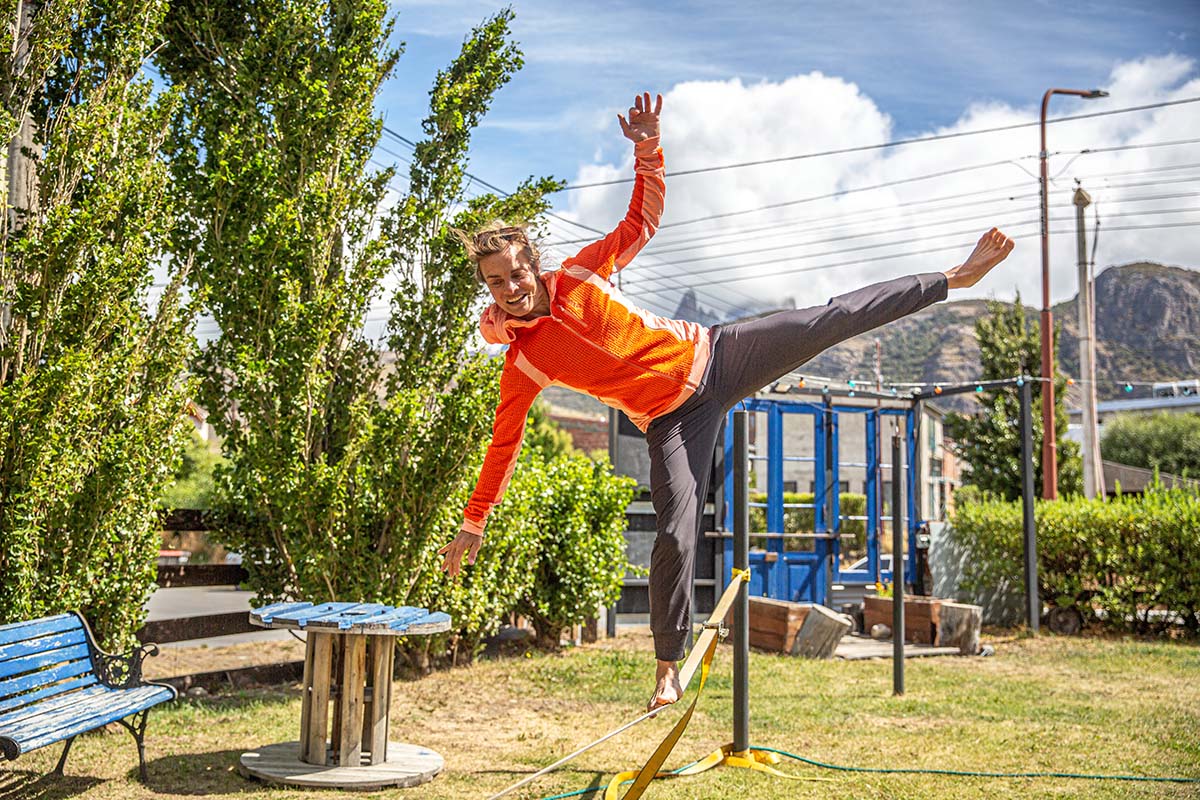
Fleece is a man-made material designed to mimic wool, first created in the late '70s or early '80s by a wool-apparel company called Malden Mills (fun fact: Malden Mills went bankrupt in the 2000s and re-emerged as Polartec—the current industry giant). Fleece is made from petroleum that is formed into strings, which are then woven into fabric. Although it’s synthetic, fleece shares a number of properties with wool: It traps air and is thus very insulative, naturally repels water (making it quick-drying and fairly water-resistant), and is very breathable. And unlike wool, fleece is machine-washable and hypoallergenic—and, of course, it’s vegan too.
As an outerwear material, fleece is fairly distinct from other insulators such as down and synthetic fill. For one, it’s less expensive, and despite its tendency to pill, can be fairly durable, too (just don’t get it too close to a flame—it will melt). It’s also cozier and significantly more breathable, which has massive benefits as a midlayer or an insulator in casual and performance settings alike. But fleece can’t quite match the warmth-to-weight ratio of down especially, and it’s not as water-resistant as synthetic insulation (most synthetic jackets feature a nylon shell with a DWR finish). There’s certainly a time and place—we love our fleeces for resort skiing, rock climbing (particularly hybrid designs), hiking, and, of course, casual use—but they’re not our first choice for fast-and-light missions or serious endeavors when we want maximum warmth efficiency or weather resistance.
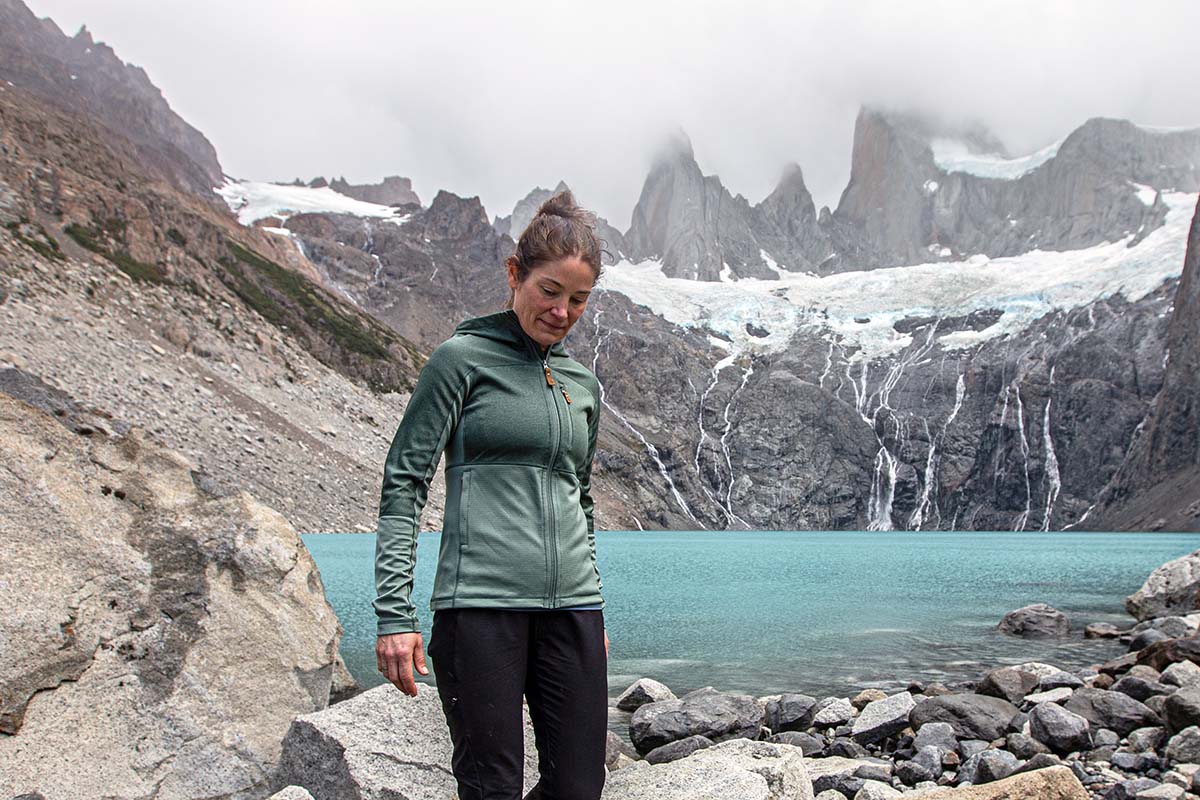
Fleece was originally designed to mimic a sheep’s hide and wool, meaning traditional varieties had a high-pile exterior and smooth interior. But given its fully synthetic makeup, the category has now evolved into a variety of forms, from thick sherpa fleece to sleek grid-backed fabrics. Really, the sky's the limit—if you want an example of how many different styles of fleeces there are, check out the fabrics section on Polartec’s website. Below, we break down the fleece types displayed in the jackets above (our list is by no means comprehensive).
Polar Fleece
Imagine a thick fleece jacket akin to The North Face's Retro Denali, and you’ve got polar fleece: A simple, double-sided fabric that’s warm, cozy, and more prone to pilling than most. Polar fleece is such a staple that its name was co-opted by the brand Polartec, responsible for high-end fleeces like Polartec Alpha and Polartec Power Stretch Pro. Polar fleece is very simple compared to more tech-savvy fabrics: You don’t get any windproofing or water resistance, no special breathability or weight-saving measures, and no gridded patterns. But it still hits all the features that we look for in a fleece and is affordable to boot. Note: In thinner varieties (less than 200 gsm), polar fleece is often referred to as microfleece.
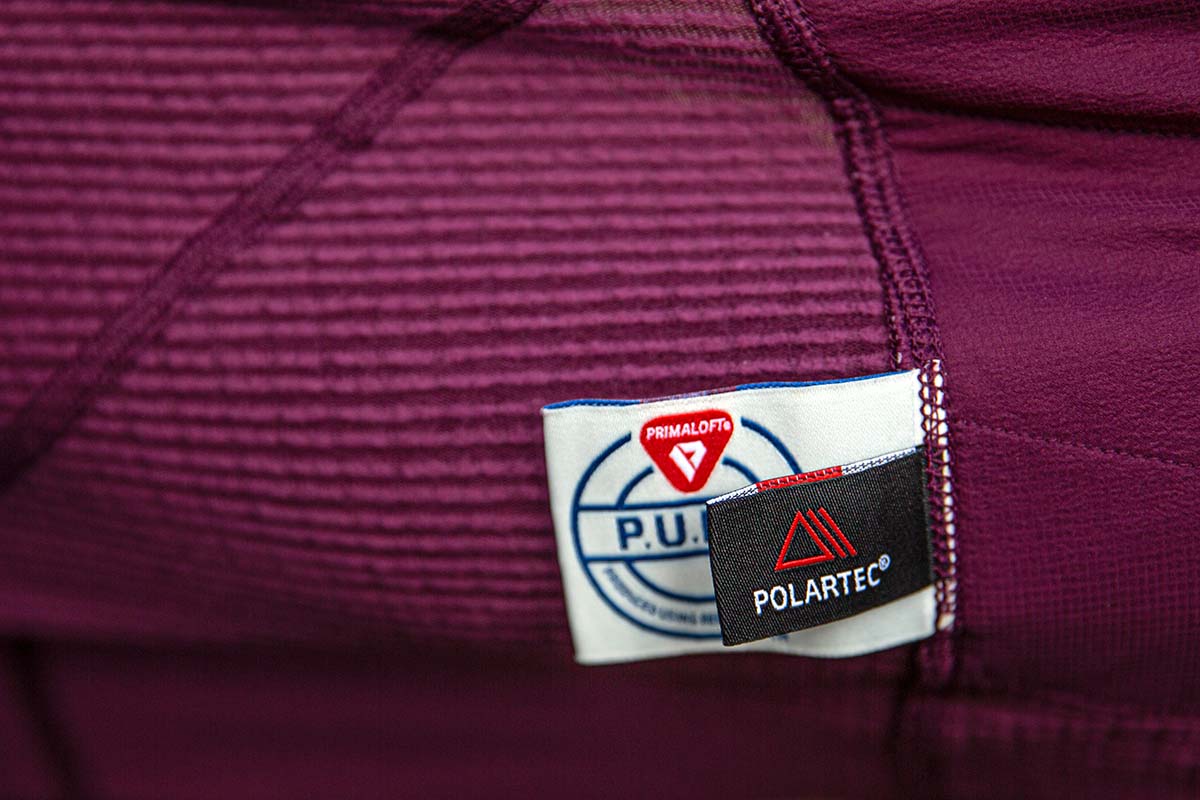
Knit Fleece
Knit fleece, or sweater-knit fleece, is epitomized by jackets like the Patagonia Better Sweater and Stio Sweetwater, which feature a heathered knit face fabric (reminiscent of wool) alongside a cozy, brushed interior that acts and feels like traditional fleece. Jackets with knit fleece are prized for their classy looks, pill resistance, and warmth, and are great alternatives to wool cardigans or jackets. On the other hand, their fairly thick and bulky build means they’re not an ideal choice for serious outdoor use.
Gridded Fleece
Whereas sweater-knit fleece is a very casual material, gridded fleece (also known as waffle or thermal fleece) goes the opposite direction with a high-performance slant. Characterized by fleeces like the classic Patagonia R1 (which uses Polartec’s Power Grid) and Melanzana Micro Grid, the interior of a gridded fleece features patterns of raised fleece (squares, circles, or hexagons, for example) with channels in between for air to flow. On the exterior, you often get a smooth surface that distributes moisture to speed up evaporation. The result is maximum warmth and breathability with minimal weight and bulk—the difference in breathability is particularly palpable compared to other types of fleece. Note: While the Patagonia R1 Air is technically defined as a jacquard fleece (meaning that a raised pattern is woven into its material), for all intents and purposes, it fits into the gridded fleece category.
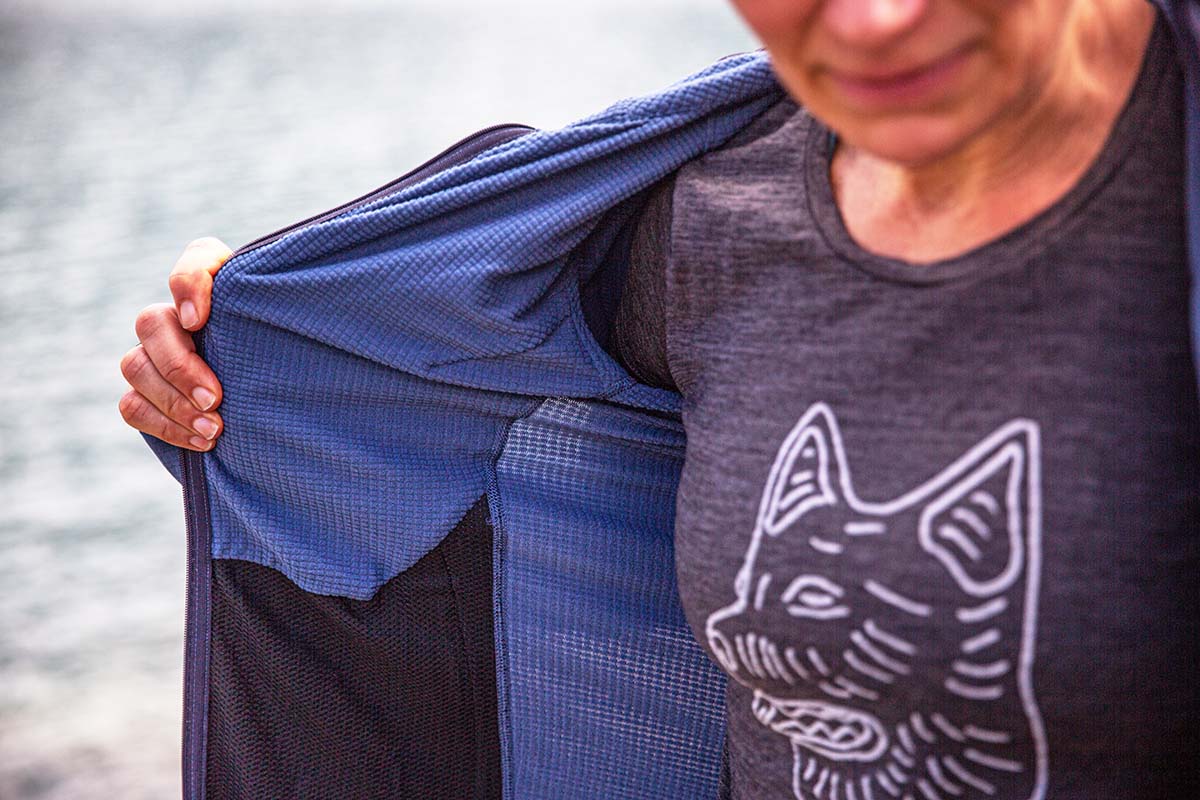
Sherpa/Faux-Shearling Fleece
Sherpa fleece is about as close as you can get to fleece’s origin story without dipping into shearling wool (for this reason, it’s also commonly called faux-shearling fleece). On one side, you get a smooth knit backer (if we’re drawing comparisons, this would be the sheep’s hide); on the other, you get a lofty, high-pile fleece that’s reminiscent of unprocessed wool. On our list above, the Patagonia Retro Pile Fleece features double-sided shearling, which means that you get this faux-wool material both on the interior and exterior. Sherpa fleece is bulky and decidedly casual, but if you’re looking for the epitome of cozy, this is it.
Other Dual-Surface Fleeces
Many gridded and sherpa fleeces feature a smooth side and a fleecy side (ironically, gridded fleeces generally place the fleecy side next to skin, while sherpa fleeces do the opposite), but they’re not the only types of fleece that fall into the dual-surface category. Here we want to specifically highlight Polartec’s Power Stretch Pro material, which is almost sweatshirt-like in nature with a soft polar fleece on the interior and smooth, low-friction exterior. With this construction, Power Stretch Pro and other similar blends retain all the benefits we love about fleece while adding excellent range of motion, shape retention, and durability. For a closer look at this technology, check out offerings like the Arc’teryx Kyanite and The North Face Summit Futurefleece above.
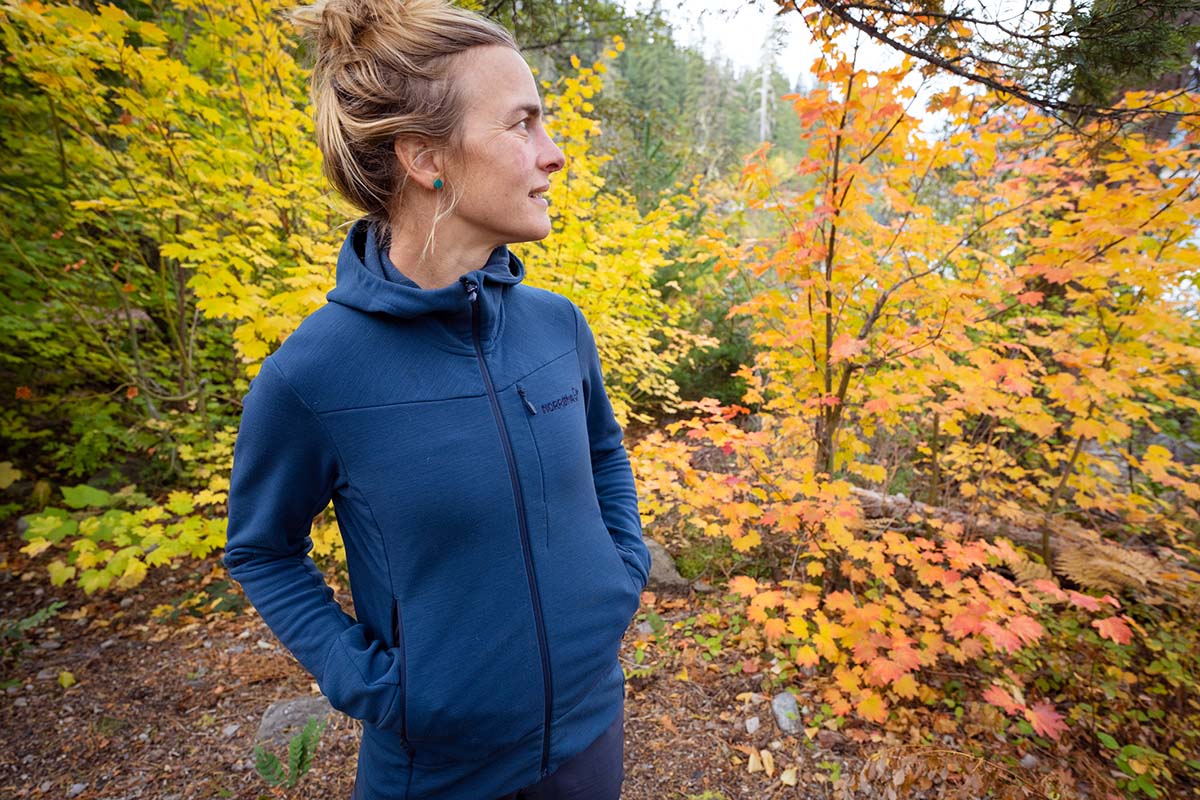
In general, we can organize fleeces into two main categories: casual and performance. Casual fleeces provide an unbeatable combination of coziness and warmth for everyday use. They are terrific for layering on chilly evenings, wearing around the cabin, and daily commutes. Our favorite casual fleeces range from sweater-knit designs that dress up nicely (the Patagonia Better Sweater and Arc'teryx Kyanite, for example) to basic pieces that are little more than the fabric itself. And while many fleeces on our list are intended for performance use, in reality, they can all be worn in casual settings (when we first got our R1 Air, we never wanted to take it off). That’s the glory of fleece: Unlike many pieces of activewear, fleece’s hallmark features of warmth, comfort, and breathability cross over seamlessly for daily wear.
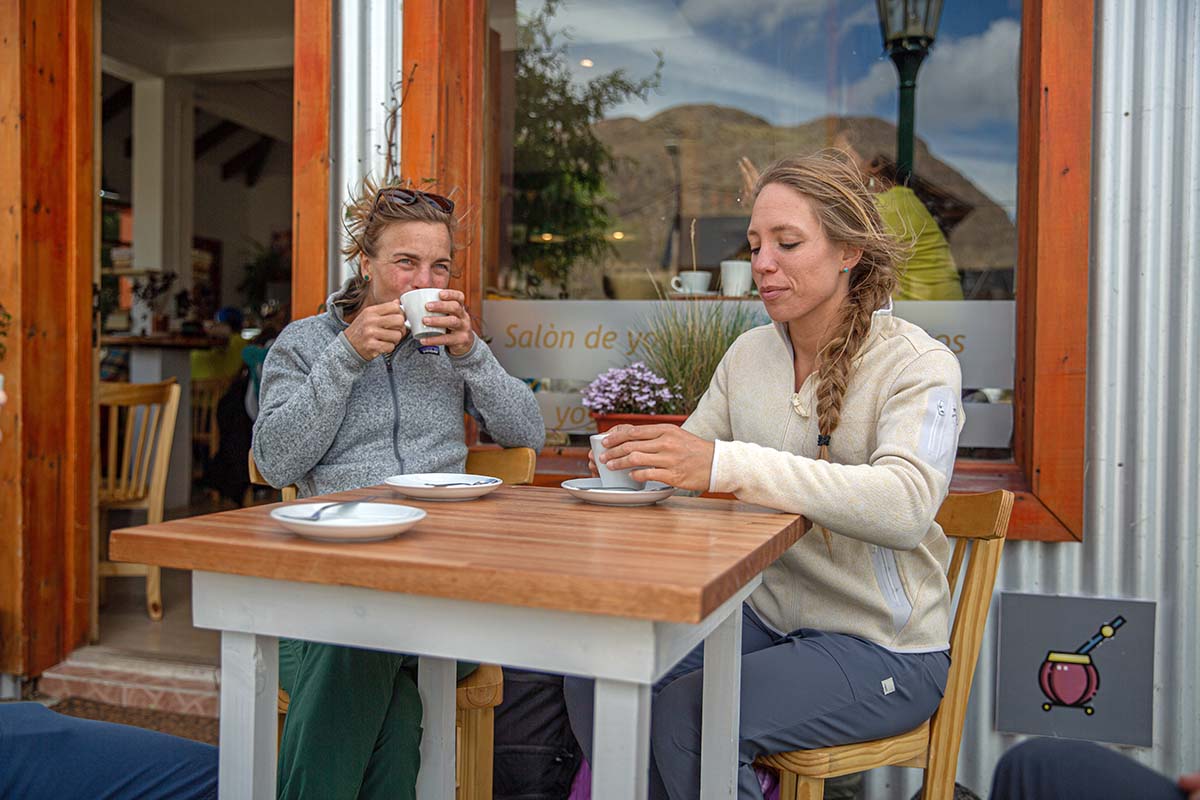
Performance fleeces have a number of common attributes: They’re snug-fitting (unlike many casual offerings, which can be on the boxy side) and stretchy, feature high-tech fabrics like Polartec Power Stretch Pro and Alpha, and often include hoods and thumb loops. Hybrid fleece/synthetic jackets also fall into the performance category, in addition to fleeces with weather-resistant face fabrics (such as the Patagonia R1 CrossStrata). When deciding on a performance fleece, it’s worth thinking about your needs in terms of weather protection, mobility, warmth, and packability. There’s virtually something for everyone.

For an idea of how warm a particular fleece will be, some jackets list the fabric thickness or fleece weight. This is often expressed in terms of grams per square meter—100, 200, and 300-gram, for example—and some brands have come up with their own rating system (Patagonia's R1 and R2, for instance). In its lightest form, a fleece is only a small step up in terms of insulation from a baselayer (The North Face Summit Futurefleece is one example) and ideal for high-output activities when breathability wins out over maximum warmth. Midweight or 200-weight fleeces are warmer and make a great pairing for fall and spring or mild-weather days on the slopes. Heavy fleeces of the 300-weight variety are warm and can insulate when temperatures dip below freezing, but their bulk often comes at the cost of mobility and breathability.
As more companies have moved toward designing their own in-house fleeces and Polartec has diversified their offerings, the demarcation isn’t quite as simple as explained above. But it’s still helpful when available, and in general, the weight of the fleece correlates with its warmth. In other words, the heavier a jacket is, the more adept it will be at keeping you warm and blocking wind from entering.
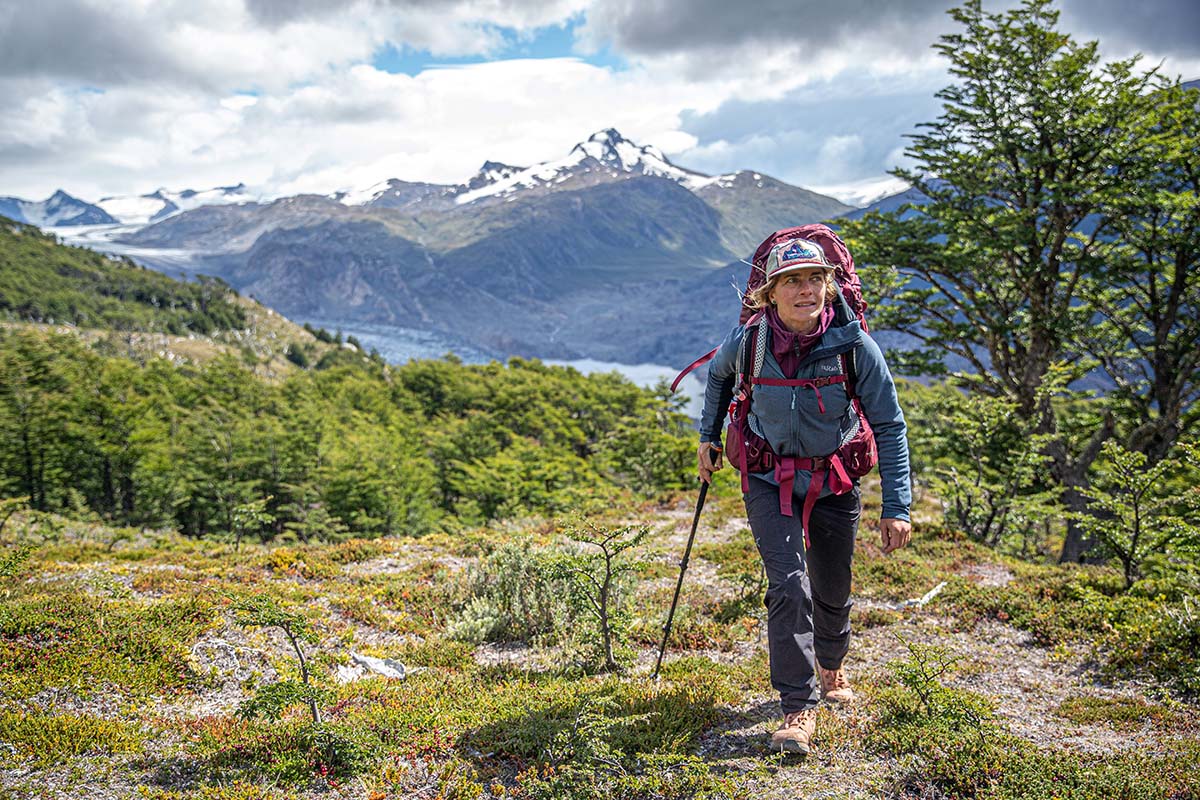
A notable upside to fleeces is their breathability, which is one of the primary reasons that they work so well as a midlayer. Compared to a softshell, down, or synthetic insulated jacket, a fleece is dotted with tiny openings—hold up a fleece into the sun and you’ll see light streaming through—which helps a great deal with airflow. And of course, the thinner the fabric, generally the more breathable the fleece will be. On the other hand, it also contributes to their shortcomings as a true outer layer in the cold and wind. As we mentioned above, some hybrid fleeces include wind-resistant fabrics, making them less permeable to air—but keep in mind that while these styles offer more protection against the elements, breathability takes a back seat. If we know we’re venturing out in inclement weather, we usually prefer to pair a baselayer with a windbreaker jacket, or wear a softshell or synthetic insulated jacket with wind-blocking fabric instead.
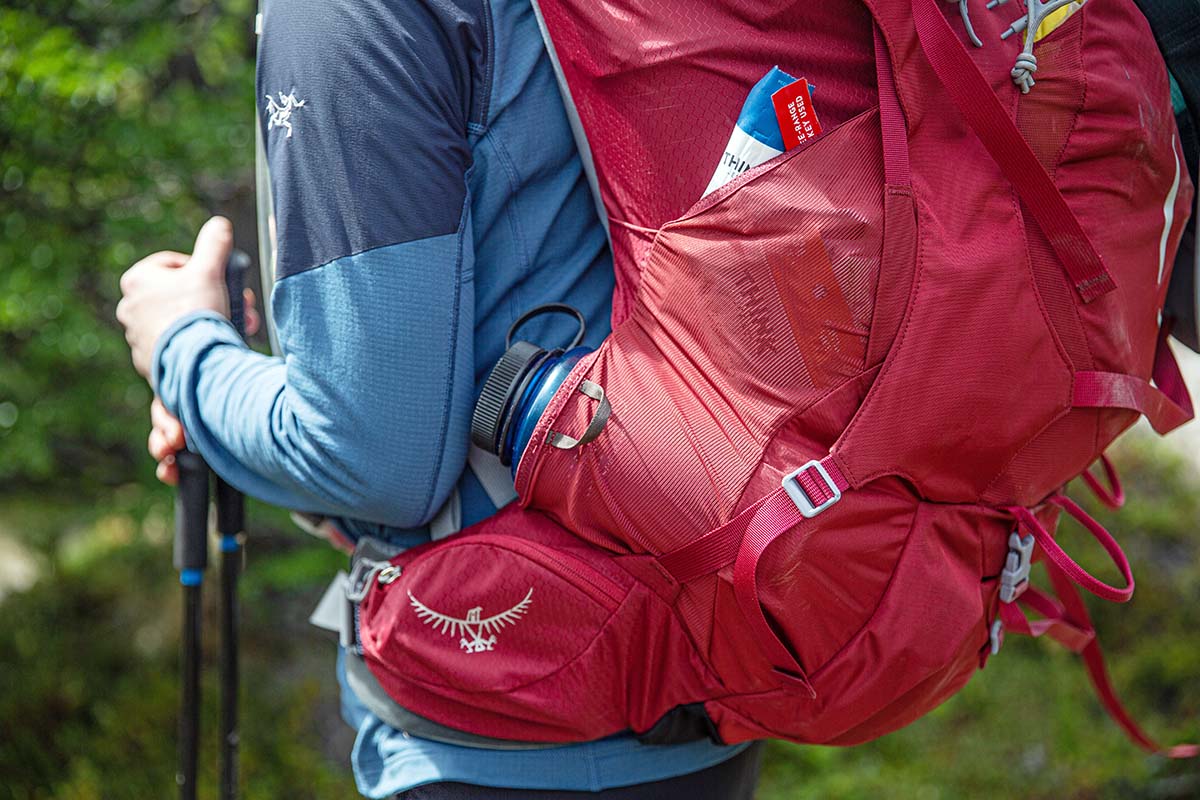
Although often worn as standalone pieces, fleece jackets are not intended to combat heavy wind or rain. The synthetic fabric itself is hydrophobic (i.e., it won't absorb moisture), but wind and water can make their way through the porous construction rather easily. What's more, unlike down or synthetic jackets, fleeces—even dual-surface designs with low-friction exteriors—do not feature a durable water repellent (DWR) finish. Some designs, like the classic North Face Retro Denali, incorporate non-fleece nylon panels that can repel light amounts of precipitation, but these only cover a few inches across the chest.

Hard-Face Fleece
We've often seen manufacturers add a tough, weather-resistant shell to boost the wind and/or water protection of fleece. Patagonia’s popular CrossStrata and TechFace jackets feature R1 or R2 fleece along with a double-weave shell for a boost in wind and/or water protection. These styles—which we call hard-face fleeces—are a great alternative to full-blown softshells, and they're cozier, too. But while they're impressively wind-resistant and can fend off light moisture—great for PNW commutes and shoulder-season days in the mountains—we don't recommend hard-face fleeces for all-out rain. In truly wet weather, you'll still want a more reliable rain jacket or hardshell.
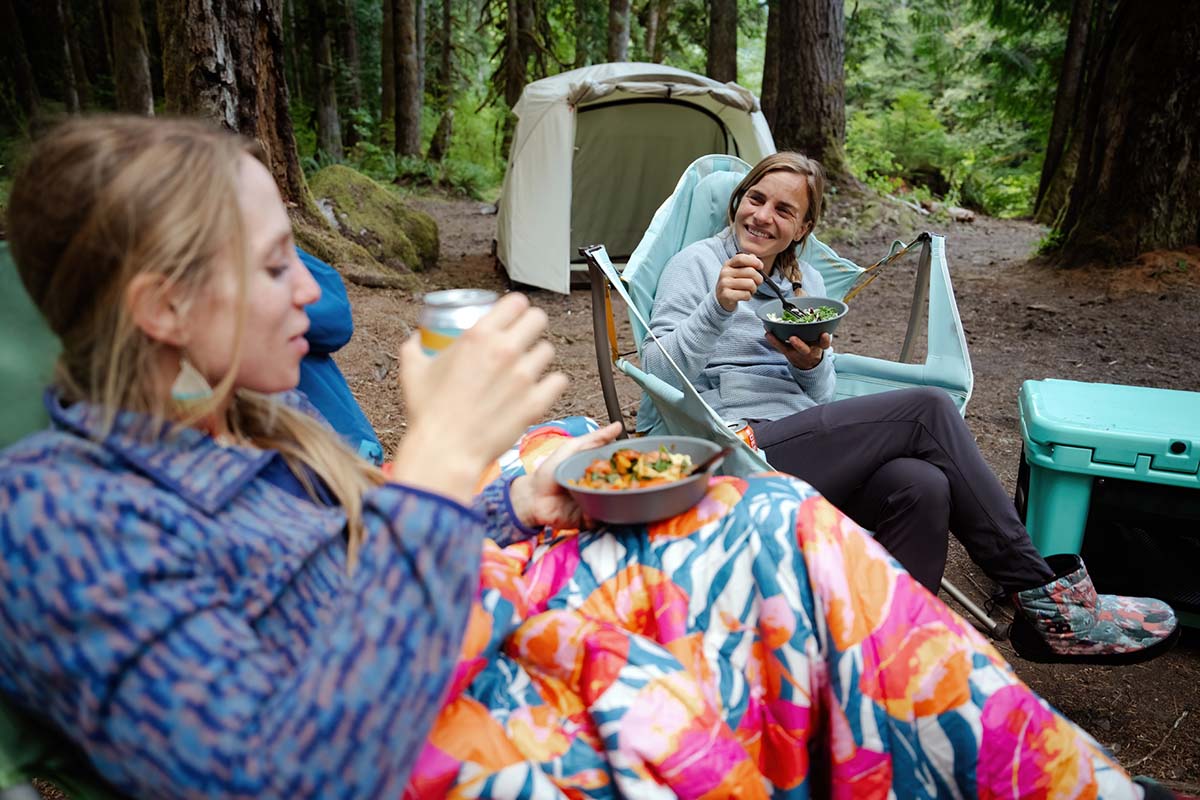
Building off the fleece types above, it’s become more and more common to see fleece paired with synthetic insulation—a combination known as a “hybrid” jacket. Most commonly, these jackets feature a fleece back with a synthetically insulated front (often finished with a nylon or polyester shell), which maximizes breathability alongside warmth and weather protection. The breathable back is especially nice when wearing a backpack, and we love the added tech at the front for wind-generating activities like trail running, backcountry skiing, and Nordic skiing. High-quality examples of this design include the Black Diamond Coefficient LT Hybrid, Patagonia Nano-Air Light Hybrid, and Arc’teryx Delta Jacket. For high-performance use, we reach for our hybrid fleeces more than any other.
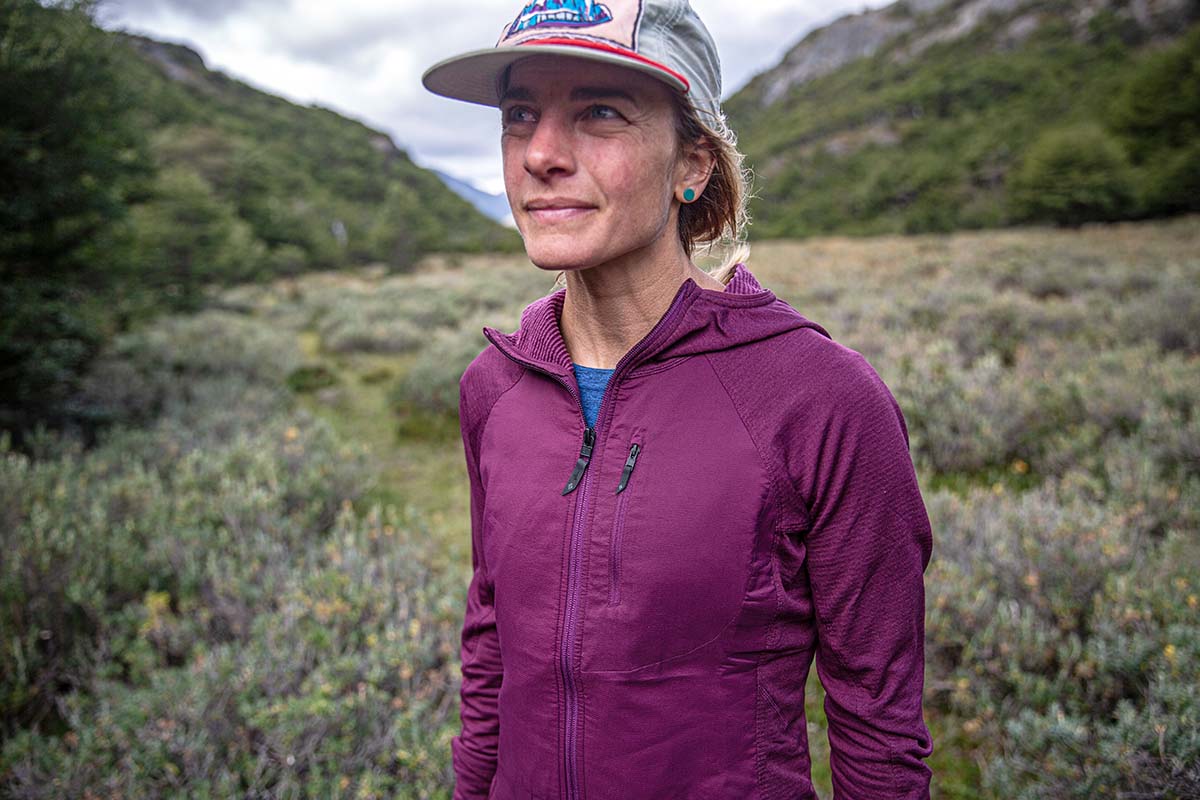
Hood
Many fleeces are offered in either hooded or non-hooded varieties. For use as a classic midlayer, we typically lean towards a non-hooded option, as even a low-profile hood can get in the way underneath your shell (unless you always use both hoods). And for pairing under a ski jacket, it’s a no-brainer to go with a non-hooded model. Alternatively, a hood is a welcome addition in colder conditions, and many are nicely fitted and stay in place even while exercising. For climbing and backcountry skiing—and particularly if you’re planning on wearing your fleece as an outer layer—a hood can be a really nice feature, and we appreciate both under- and over-the-helmet varieties.
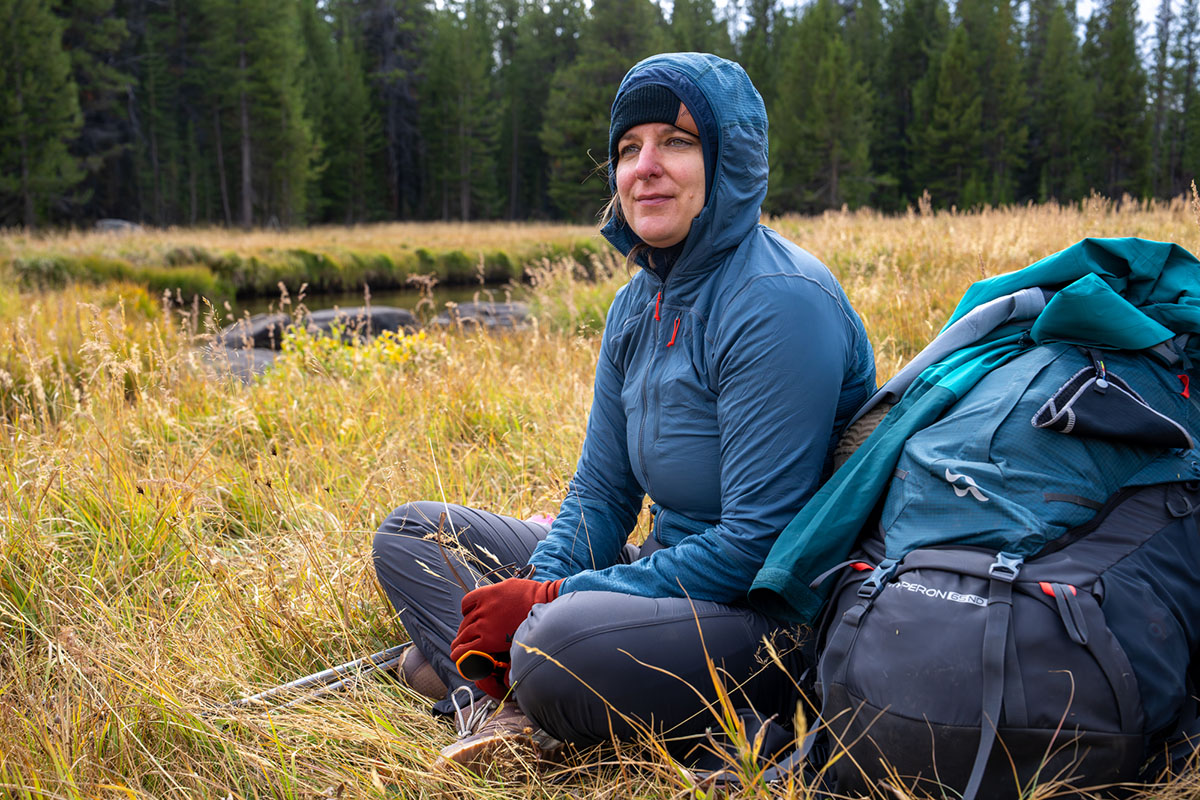
Thumbholes
Performance fleeces designed for activities like running or Nordic skiing will occasionally have thumbholes built into the sleeves. While serving as an opening for cold air to sneak in when not in use, the openings work well for keeping the sleeves in place during high-effort activities or when taking layers on and off. User tip: If you’re eyeing a jacket that has this feature, we recommend checking to make sure the fabric around the thumbhole has some stretch so it doesn’t feel like your thumb is being yanked around when you extend your arms—and that the sleeves are long enough that the loops fall in the right place.
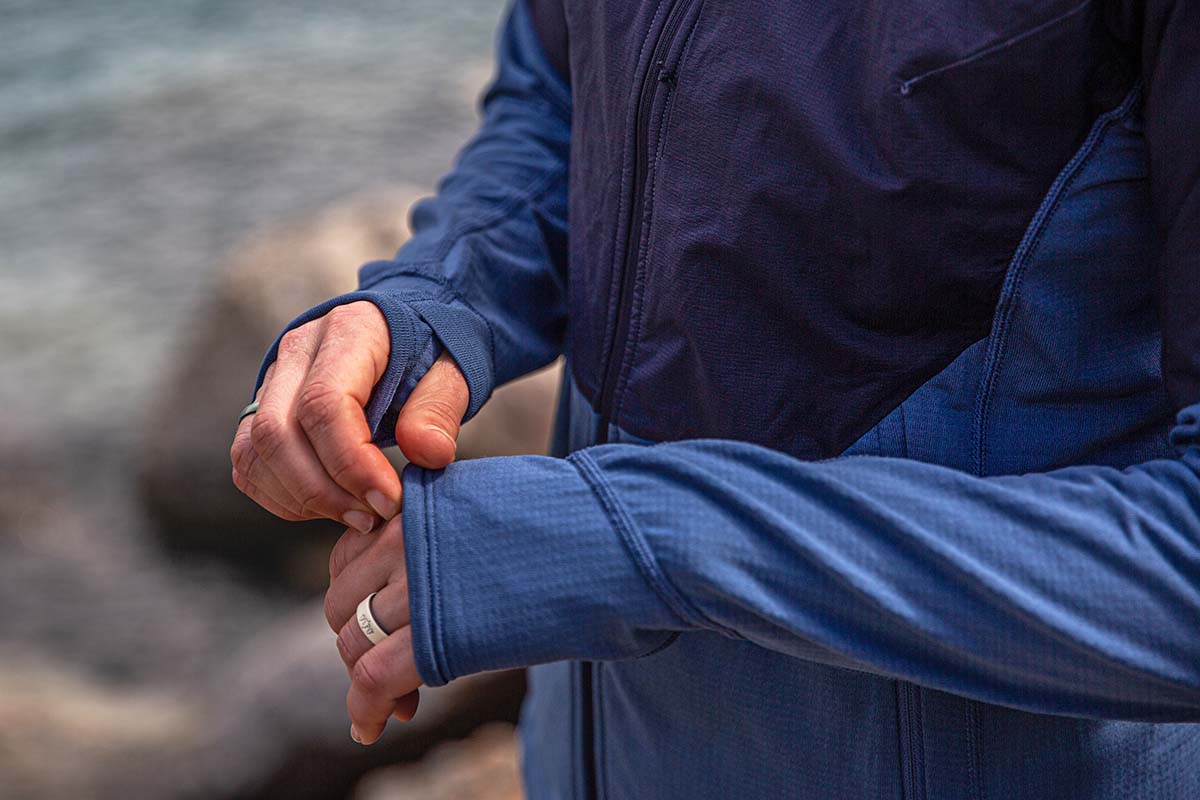
Full-Zip vs. Pullover
Most of the jackets on this list are of the full-zip variety, which gives you maximum versatility and are easy to slip on and off. Full-zip models tend to have more features like hand pockets and stretchy side panels, whereas pullovers are more basic and function like a sweatshirt (albeit a very comfy one). The upside of fleece pullovers is that they weigh slightly less, pack down smaller, and generally are cheaper. The Patagonia Lightweight Synchilla Snap-T is an extremely popular fleece pullover that, in many ways, defines the category, and offerings like the Melanzana Micro Grid (which the Mountain Hardwear Summit Grid Half Zip Hoodie took influence from) have a cult following for everyday and performance use alike.
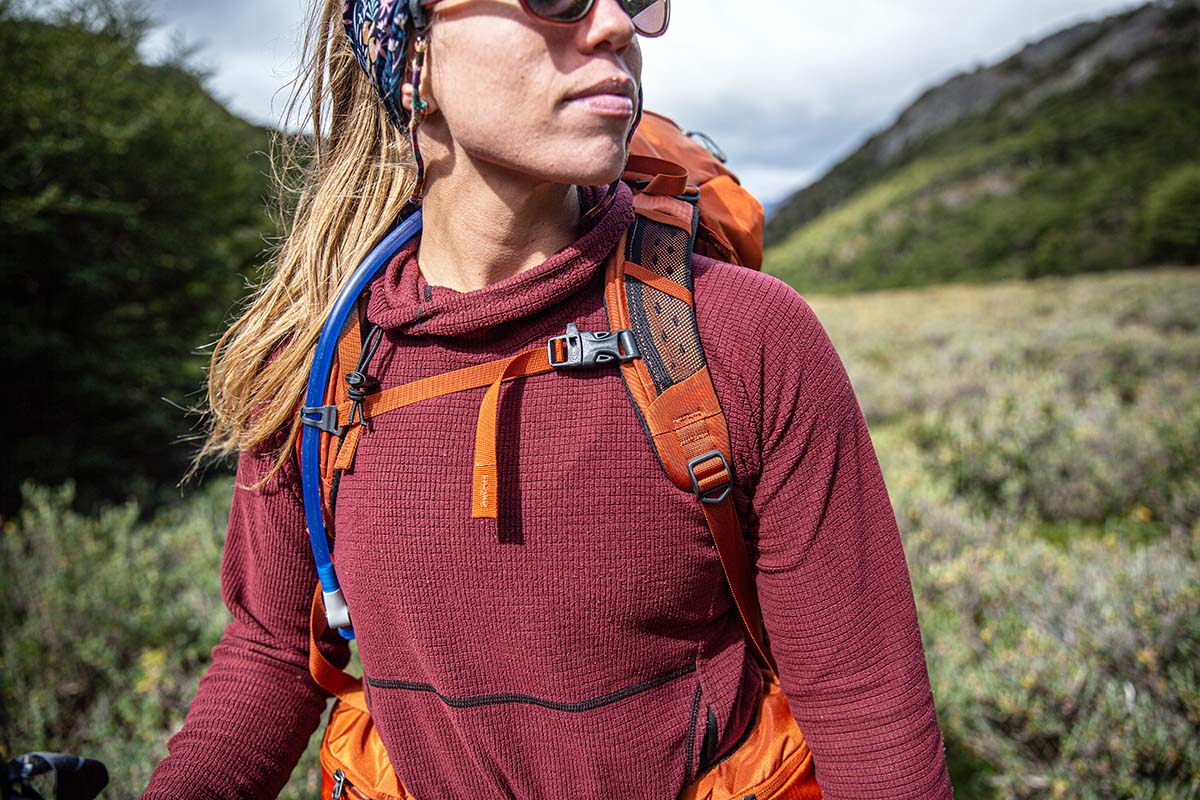
Fleece jackets range widely in terms of fit, and it’s important to look into the jacket’s intended use to make sure it aligns with your own. Performance pieces like the Fjallraven Keb have a trim cut that is designed to remove excess fabric for added mobility, efficient ventilation, and easy layering. On the other hand, roomier options like the Patagonia Lightweight Synchilla Snap-T have a relaxed look that’s great for casual wear. Casual fleeces, in particular, do not cross over well for performance use because of the extra bulk, but we do find ourselves wearing trim performance fleeces a lot around home and for daily use. If you’re in search of a jacket adept at both, an option like the Arc'teryx Kyanite Hoody may be the ideal choice, with enough room to be comfortable but not so loose as to be useless in the backcountry.
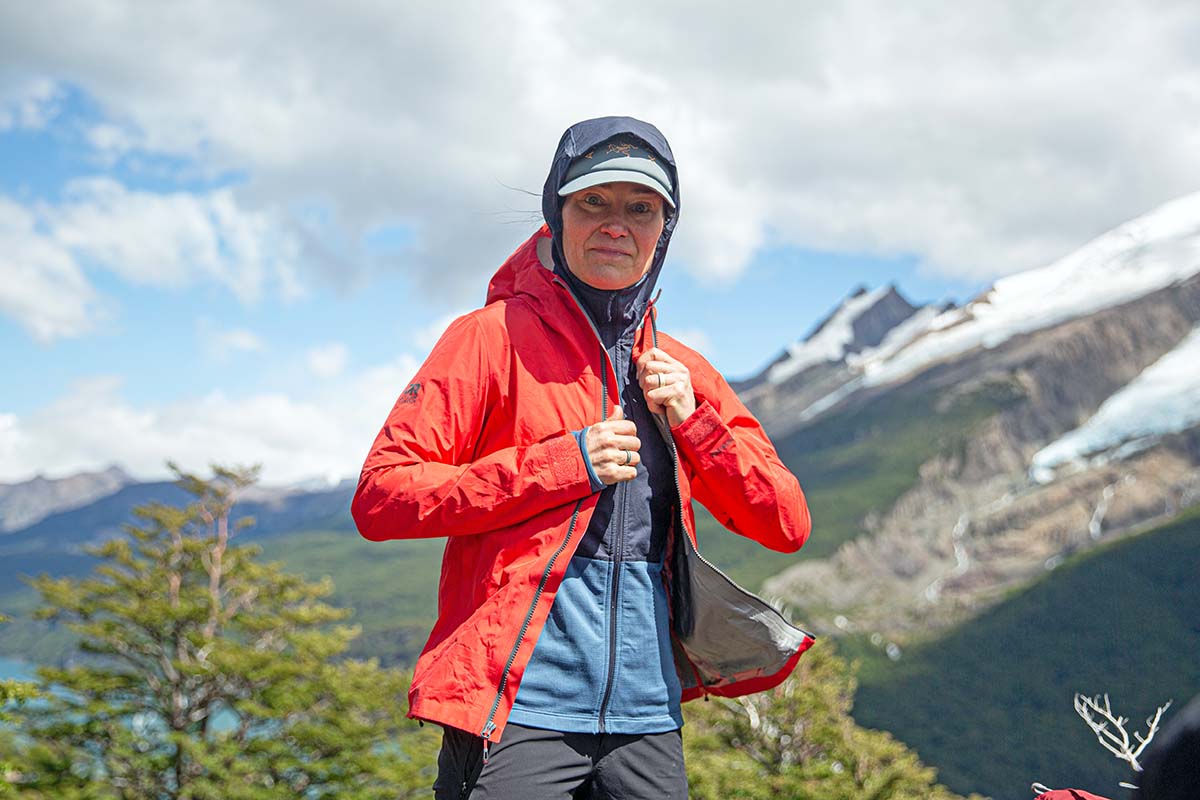
We're big fans of fleece, but the man-made material is not without its downsides. Polyester fleece is a synthetic, petroleum-based material, which means a few things. For one, it’s plastic—in fact, it’s made up of the same stuff as those single-use plastic bottles many of us try to avoid. Second, unlike sustainably produced natural materials like cotton or down, the production of fleece can result in greenhouse gas emissions and potentially unsafe work environments. And finally, fleece sheds throughout its lifetime, littering microplastics in its wake—as multiple studies have shown, one single fleece jacket can release thousands of fibers into wastewater with each wash. Given the current state of plastics in our oceans, this is not good news.
But there are steps we can take to address this issue. Companies like Patagonia and Polartec produce most of their polyester fabrics (including fleece) from recycled plastic bottles, which both reduces emissions and repurposes materials that might otherwise end up in a landfill. We’re also seeing manufacturers increase their use of natural fabrics—yes, even in fleece—including hemp, lyocell, wool, and bamboo. Unlike polyester fleece’s microplastics, fibers that shed from these materials actually biodegrade. And then that leaves you, the consumer. You can do your part by following the three R’s (reduce your consumption, reuse what you have, buy products made with recycled materials), and when you can, seek out clothing made with natural—rather than synthetic—fibers. Finally, consider purchasing a wash bag (like this one from Guppyfriend), which will keep your fleece's microplastics out of your washing's wastewater.
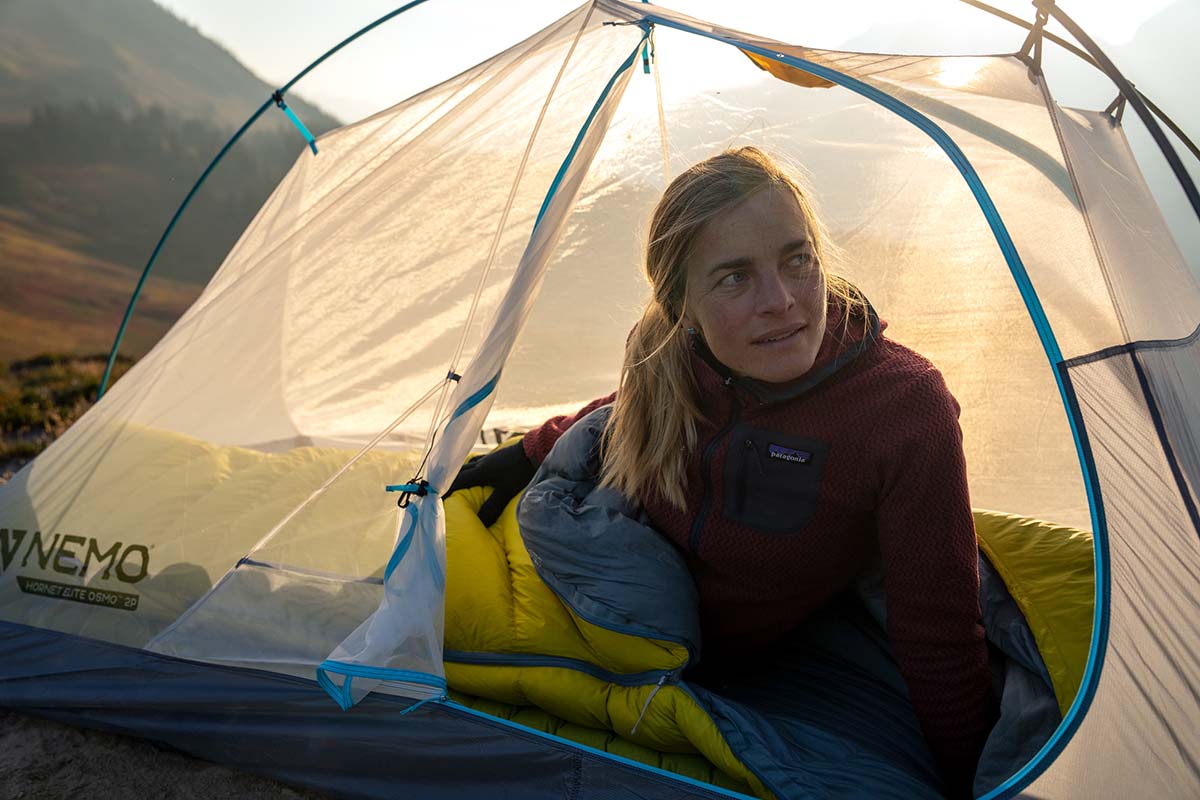
Pilling is one of the downsides of a low-quality fleece, and even more premium options can start losing fleece over time. Once a jacket starts pilling up, it’s difficult to reverse the process, so prevention is key here. One of the best ways to extend the life of your fleece is avoid the dryer. Line-drying or at least tumble-drying on low will do wonders, and you might have success washing your fleeces on the delicate wash cycle. Also, while fleece jackets are a popular choice for hanging around the campfire, do your best to keep them clear of the flames, as the plasticky construction will melt when exposed to extreme heat. Beyond those considerations, fleeces are easy to maintain and should give you years of comfy service.
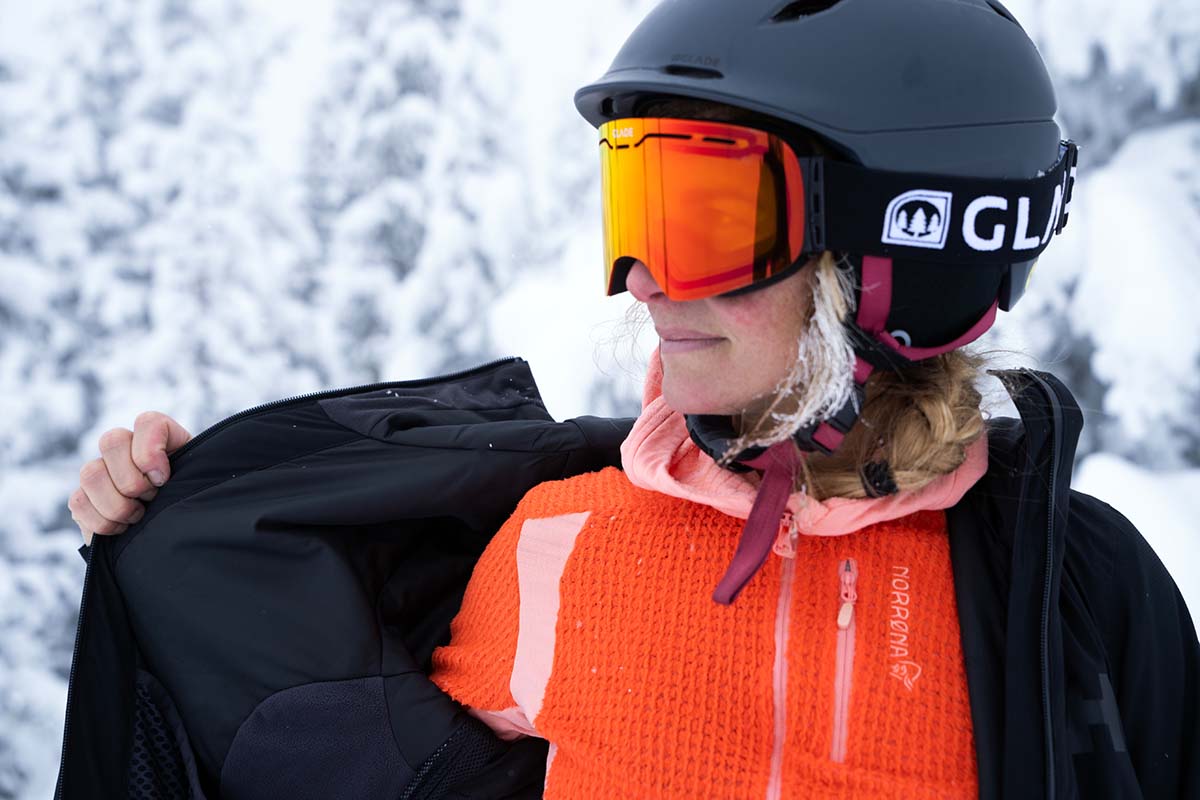
The midlayer market is chock full of options, and fleece’s two primary competitors are synthetic jackets and down jackets. Both are more expensive than fleece but offer improved warmth relative to their weight and are far more packable. Further, synthetic jackets provide better protection against wind and rain (although some modern fleeces aren’t far behind). But synthetic and down jackets require a lining and outer shell to hold the insulation, which impacts comfort and the ability to pull away sweat and hot air. Thus, if breathability and a soft next-to-skin feel are at the top of your list, a fleece is probably your best bet. In sum, fleece excels at aerobic activities when bulk isn’t as much of a concern, such as resort skiing and day hiking. And to be sure, there simply is no end-all-be-all insulating layer, which is why it's common for people to own one (or more) of each of these styles of jackets.
Back to Our Top Women's Fleece Jackets Back to Our Women's Fleece Comparison Table